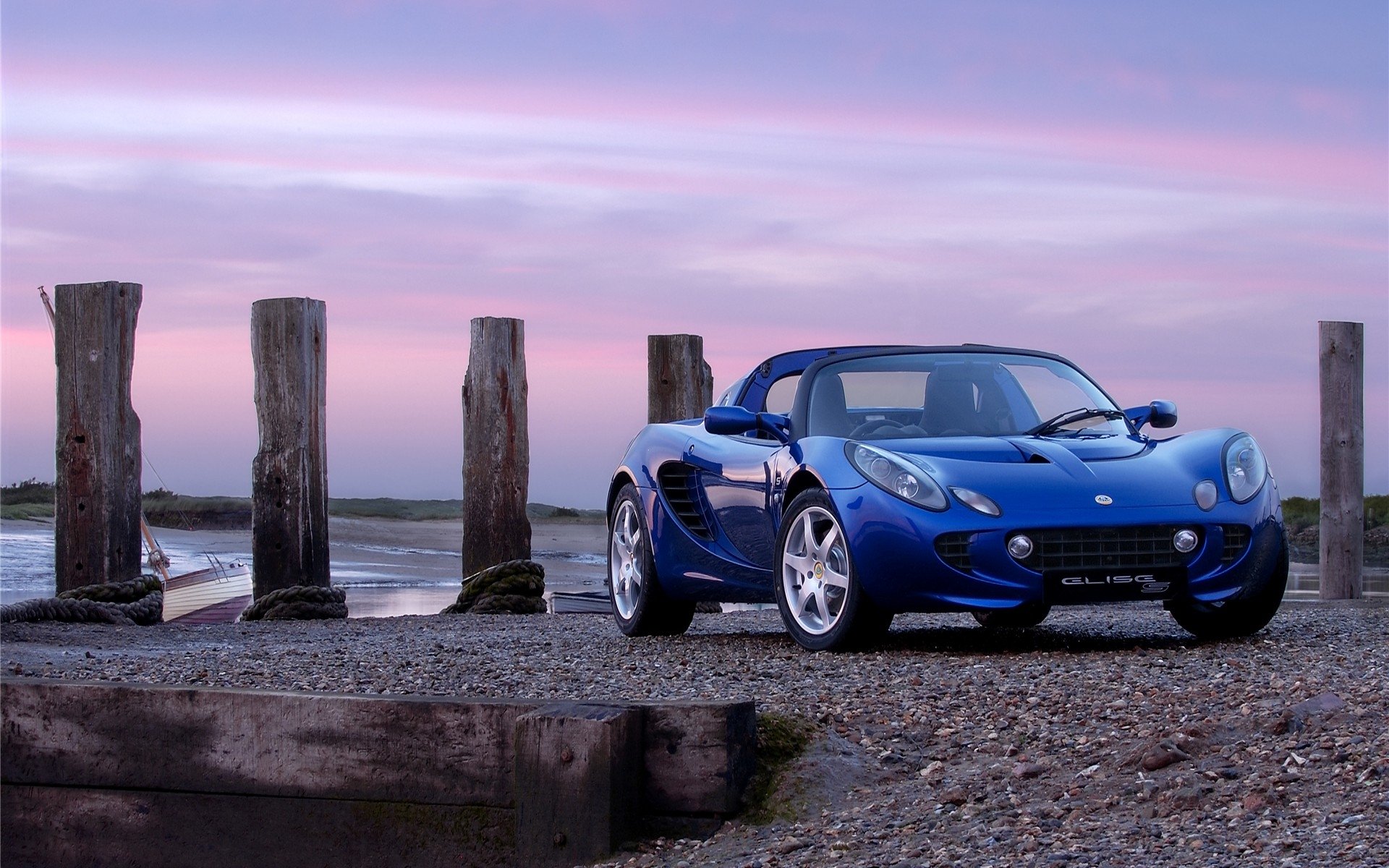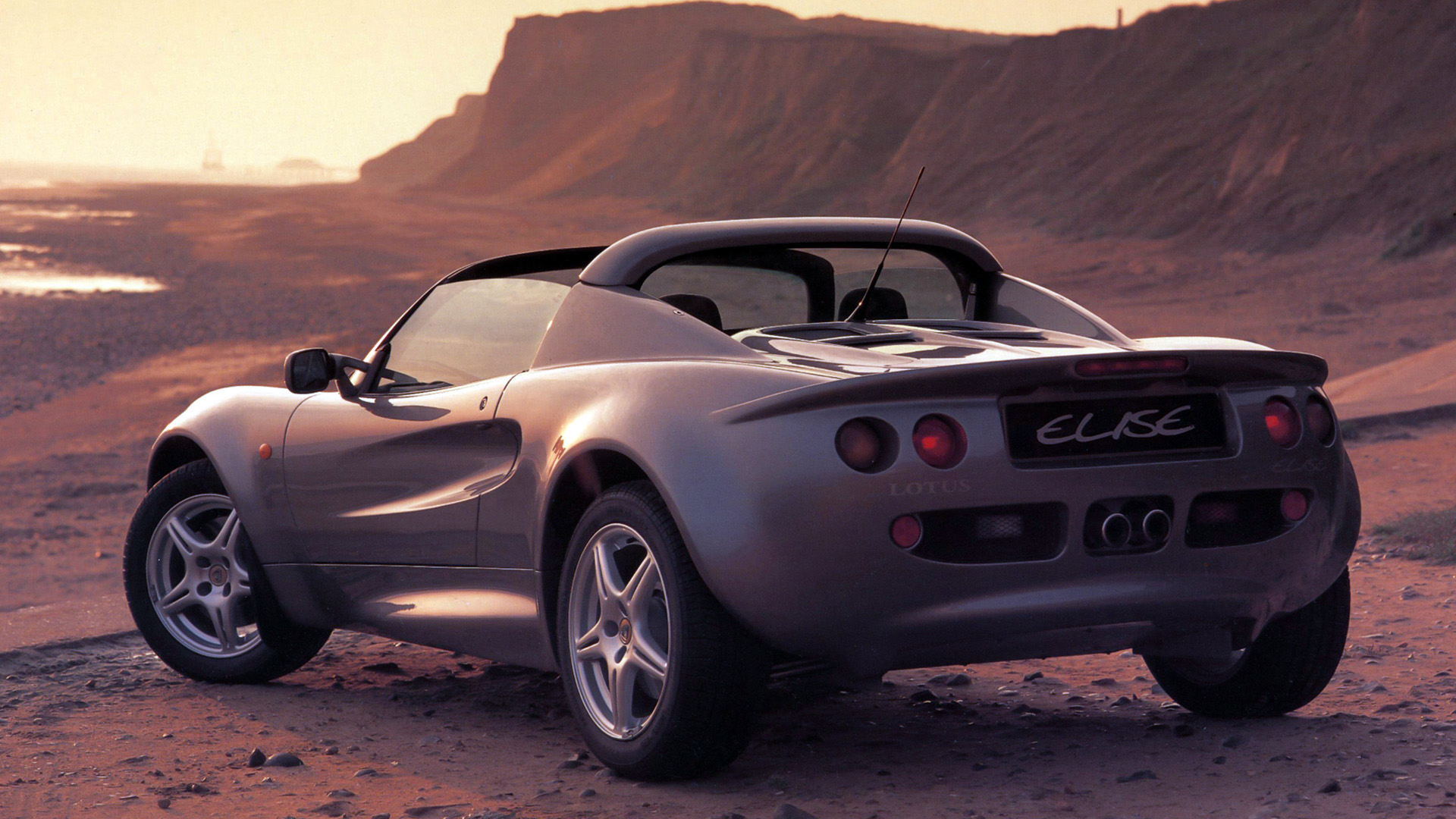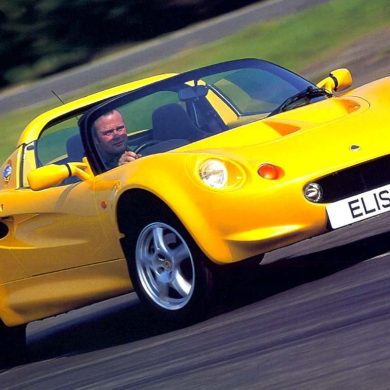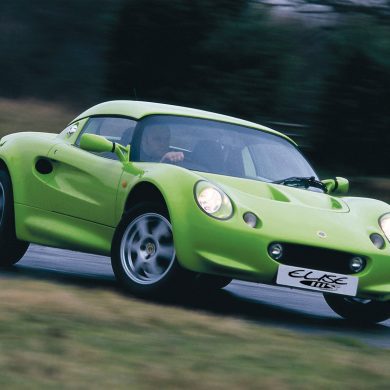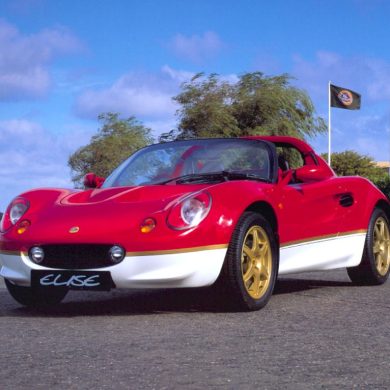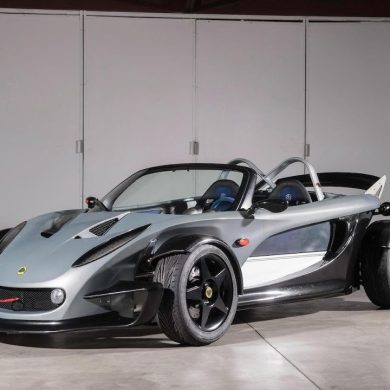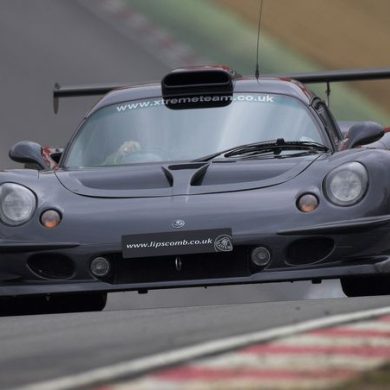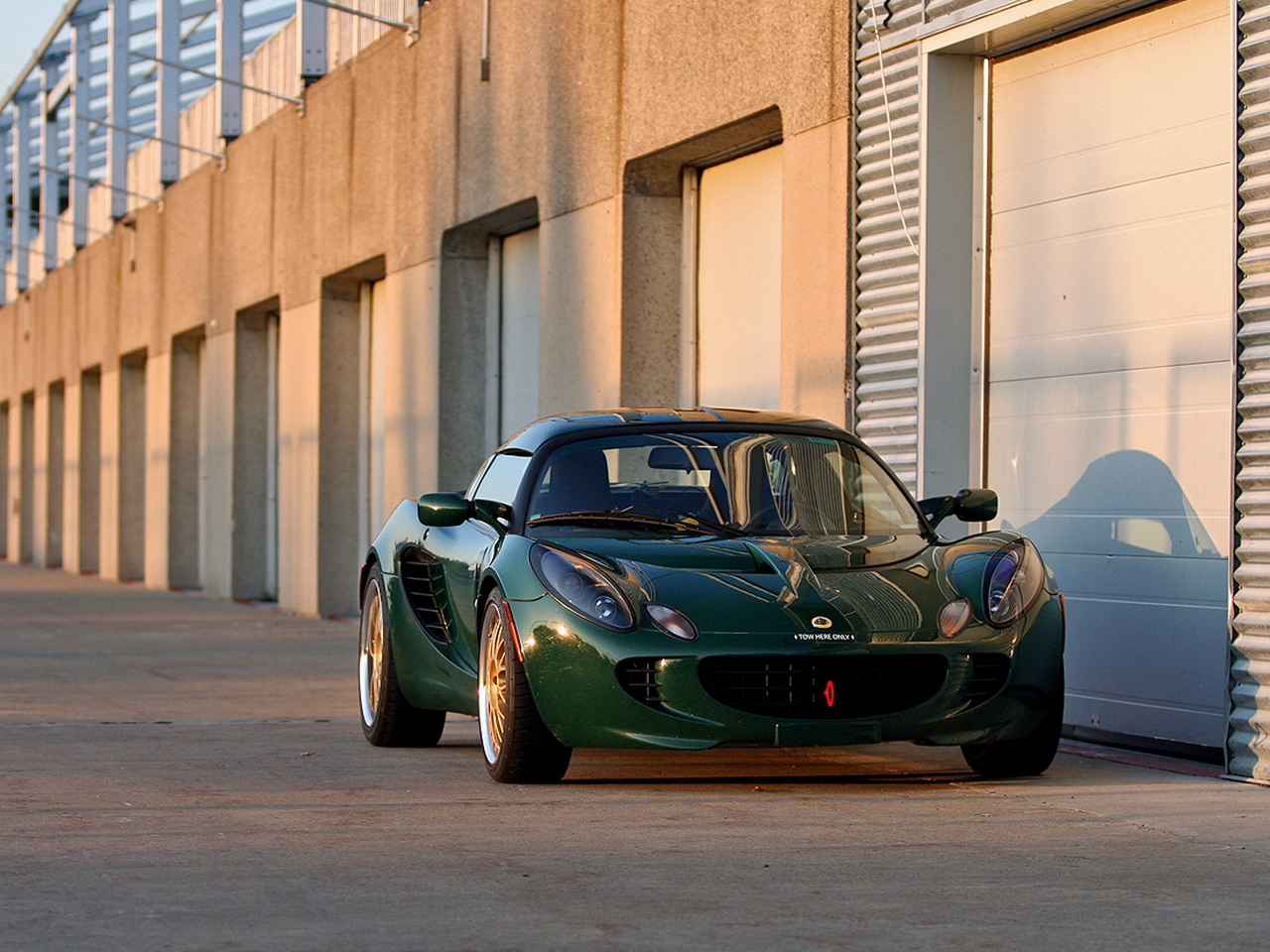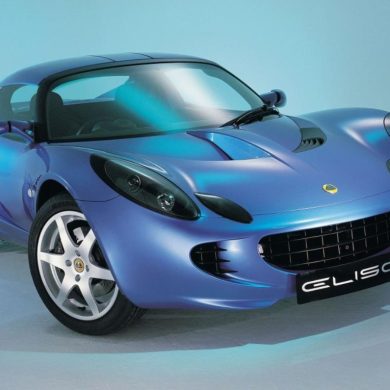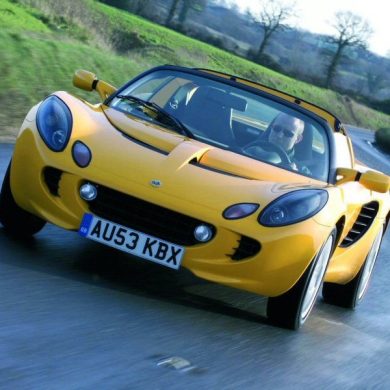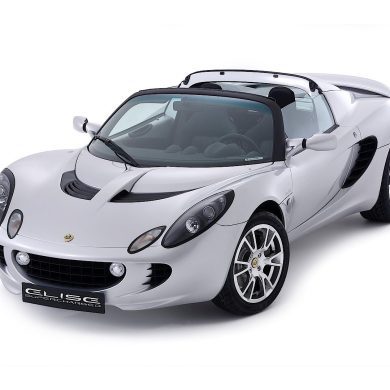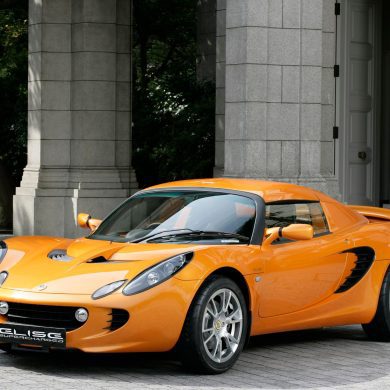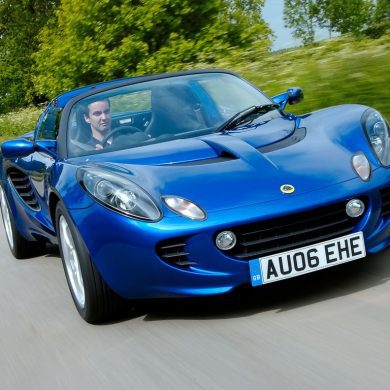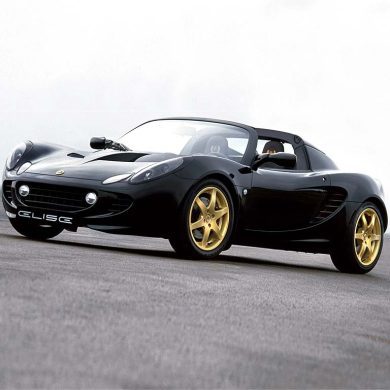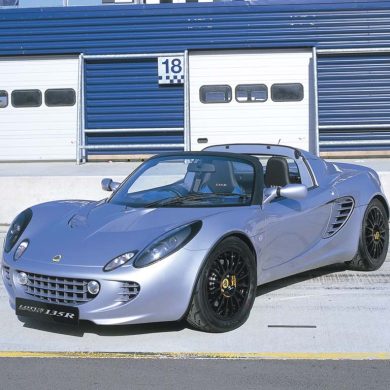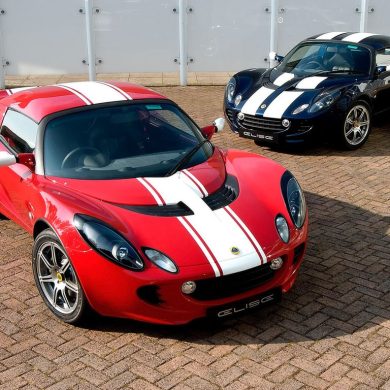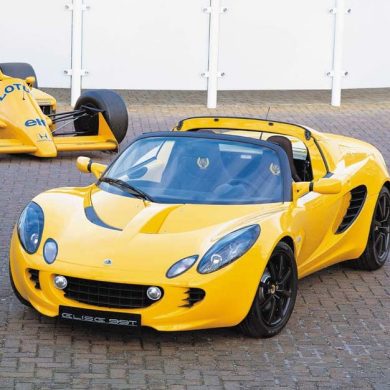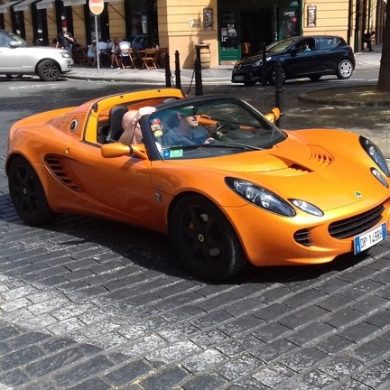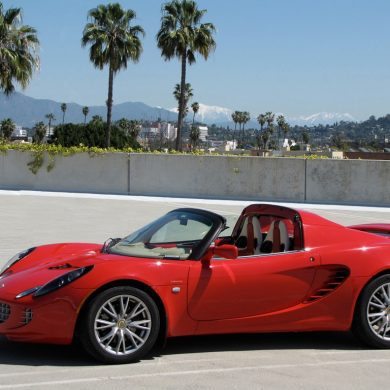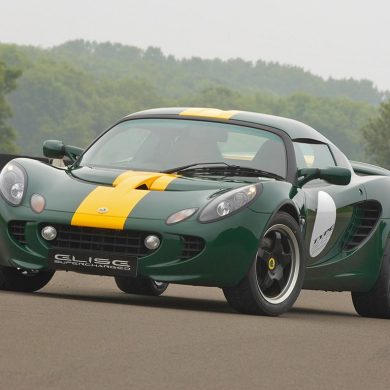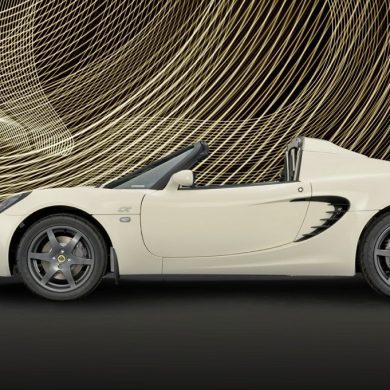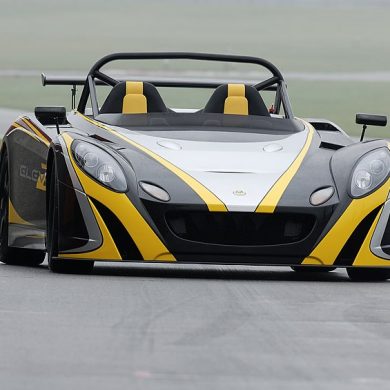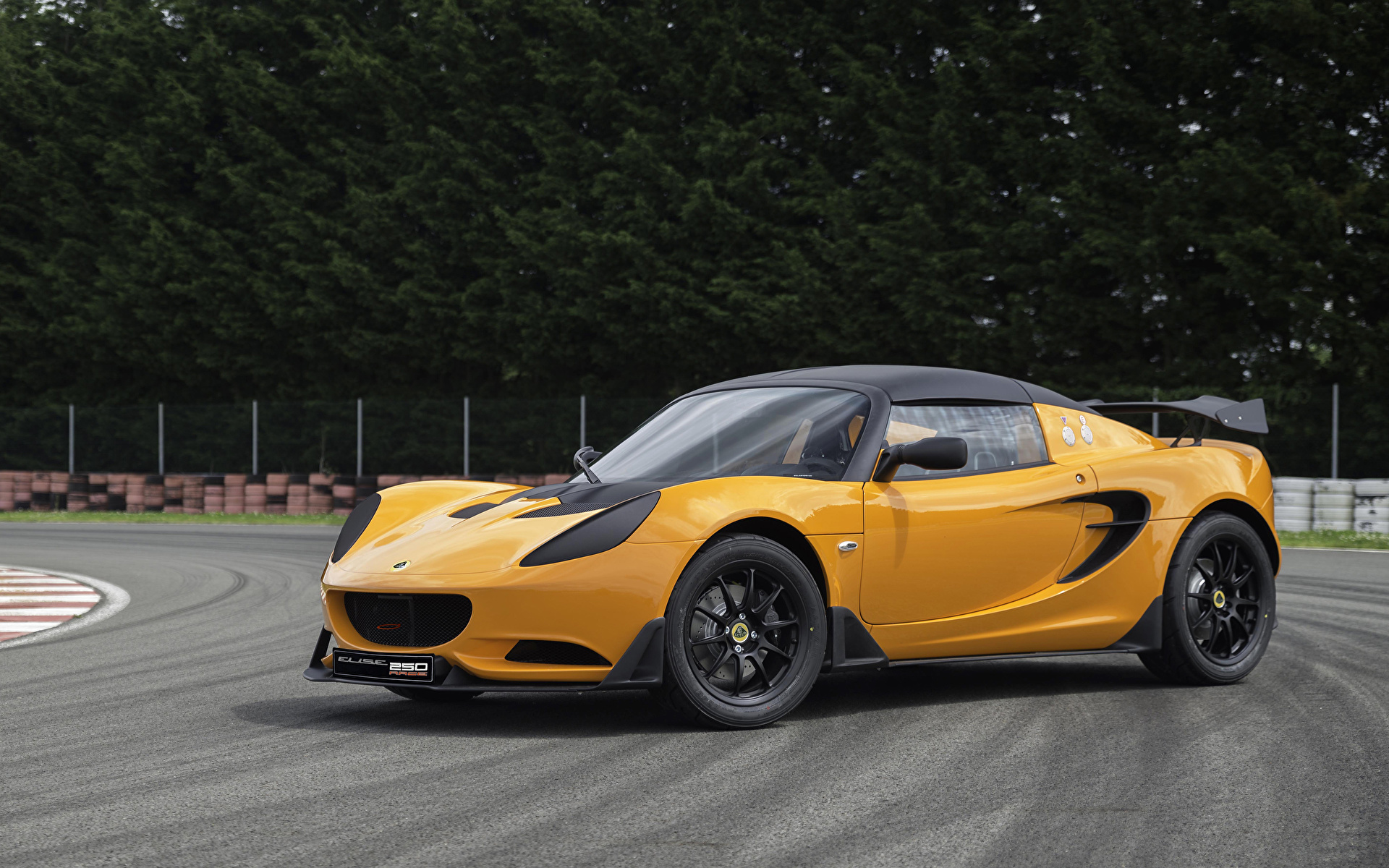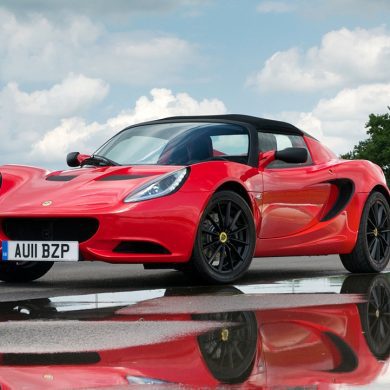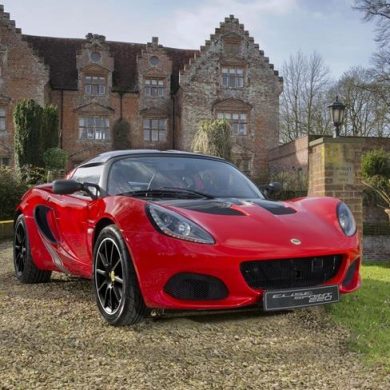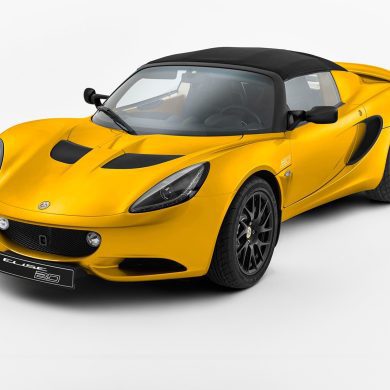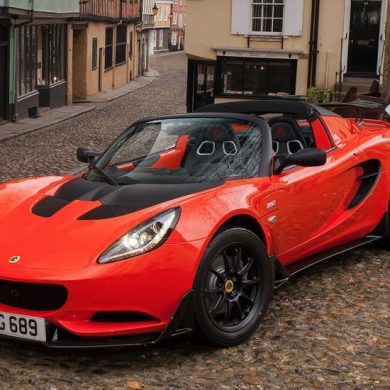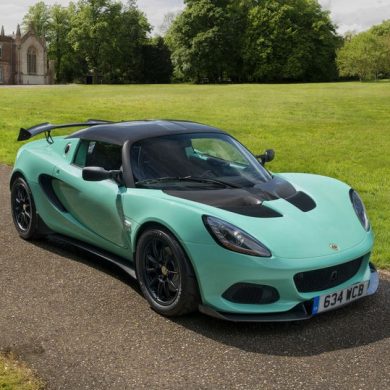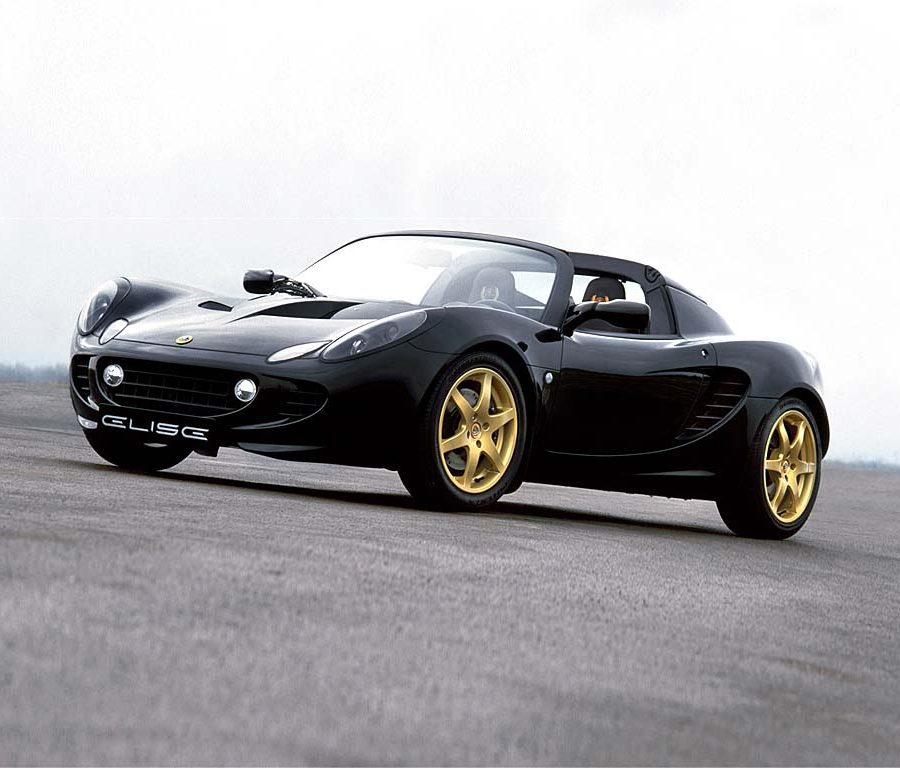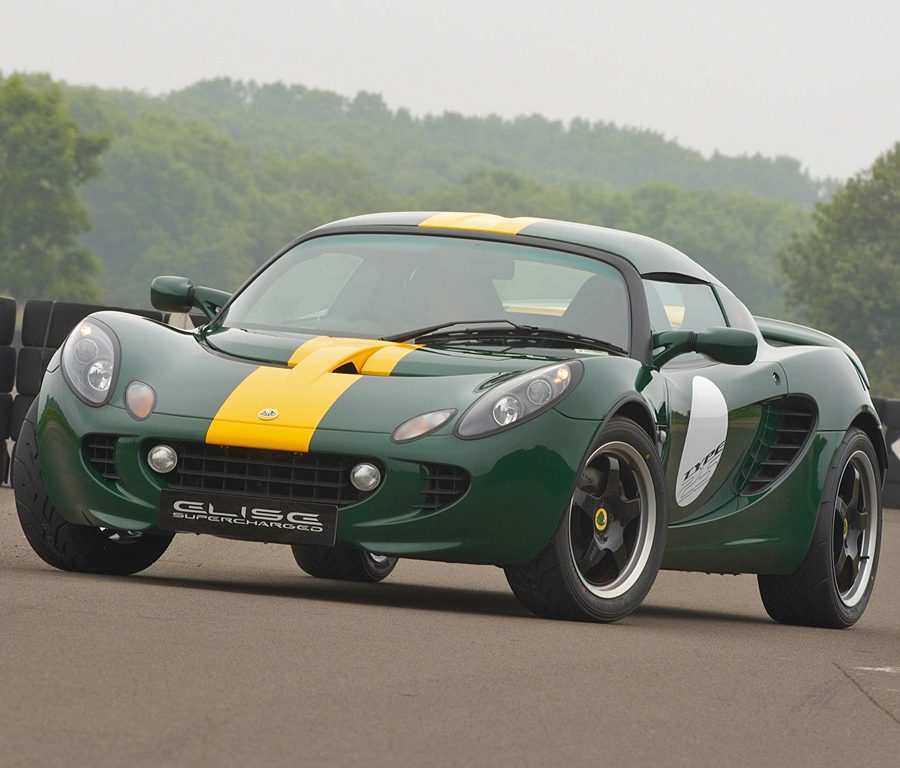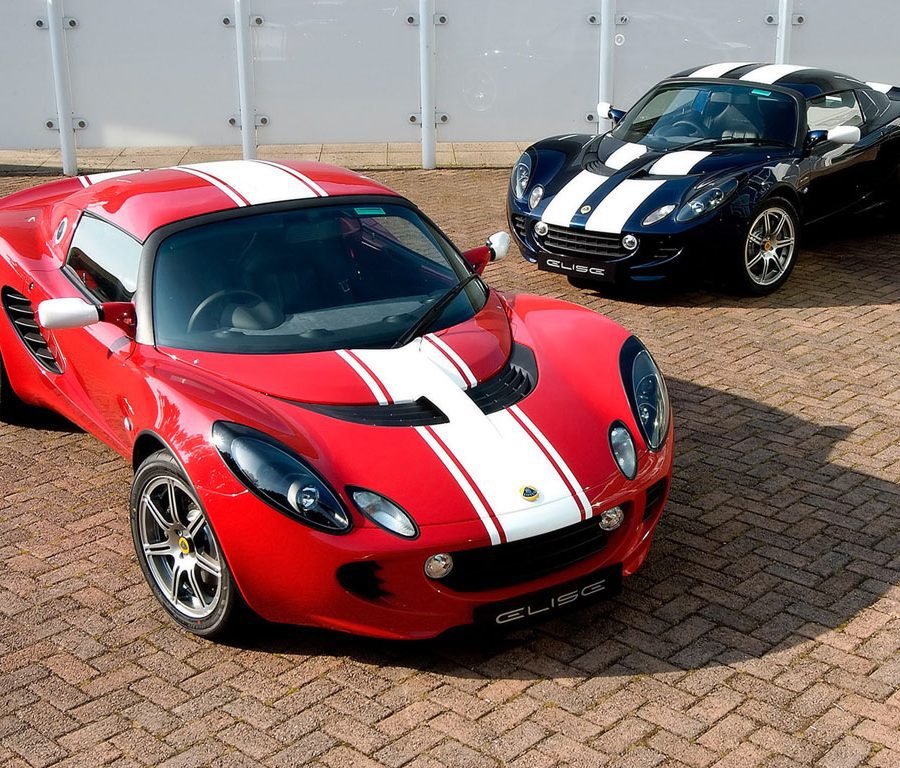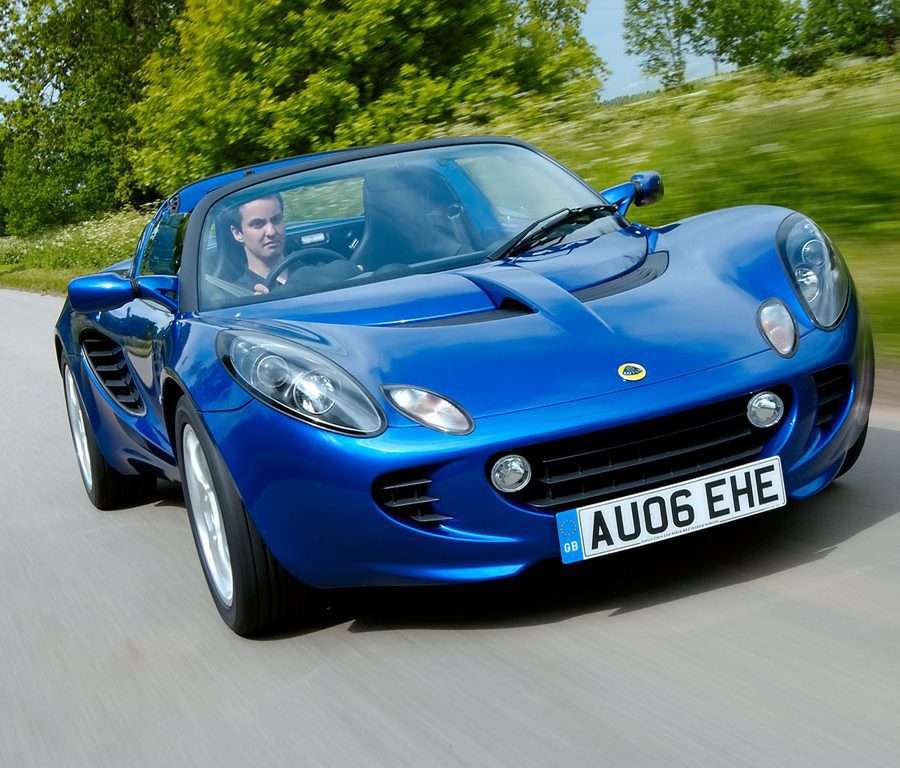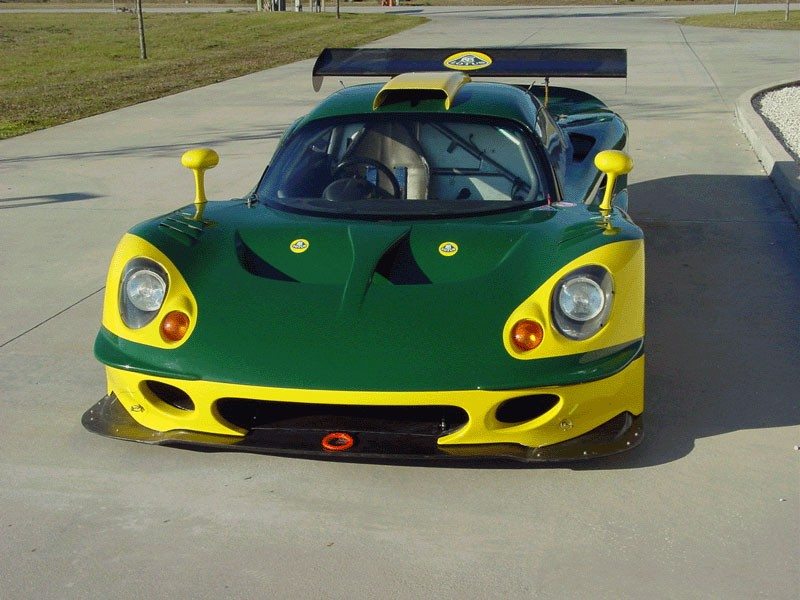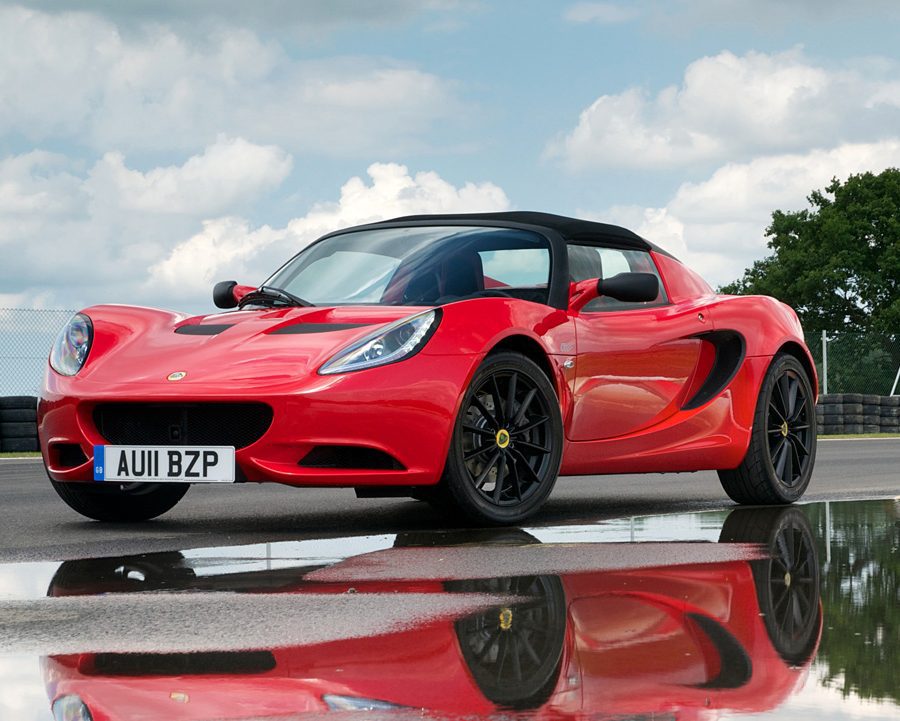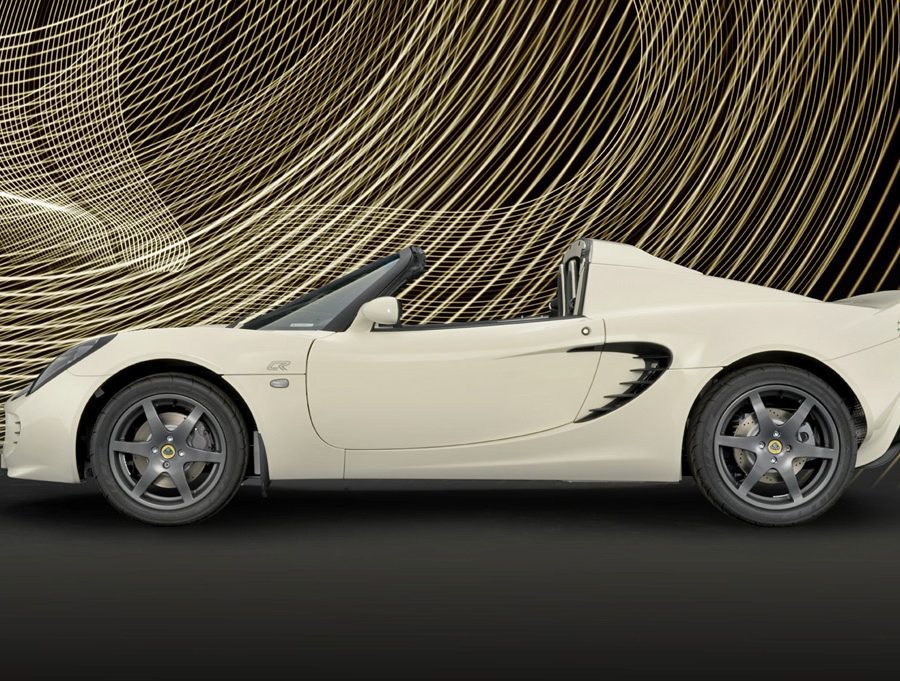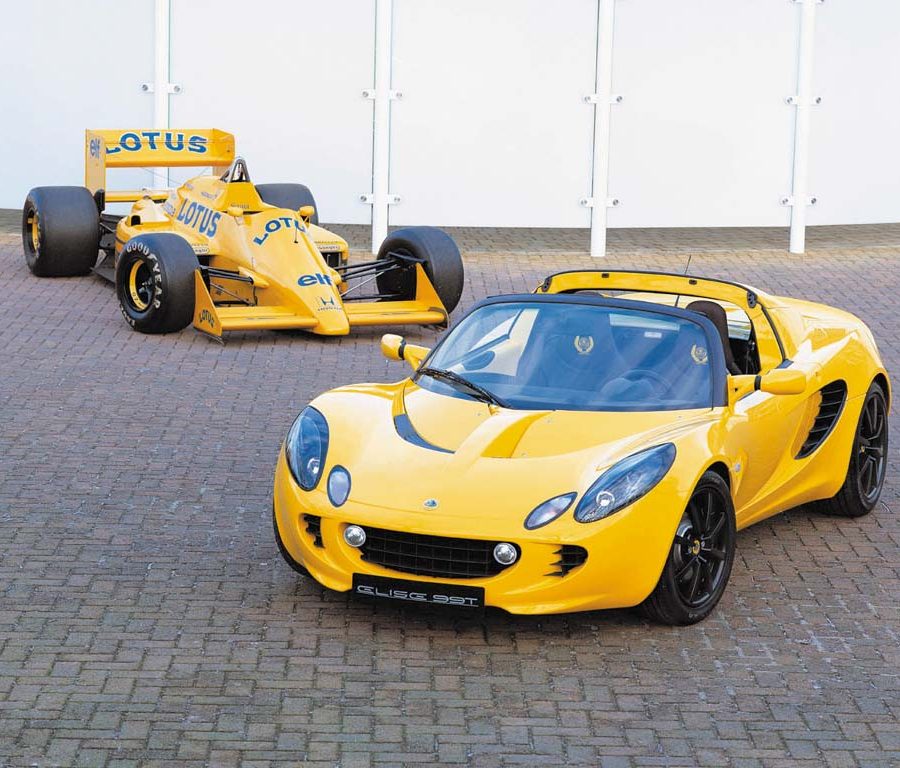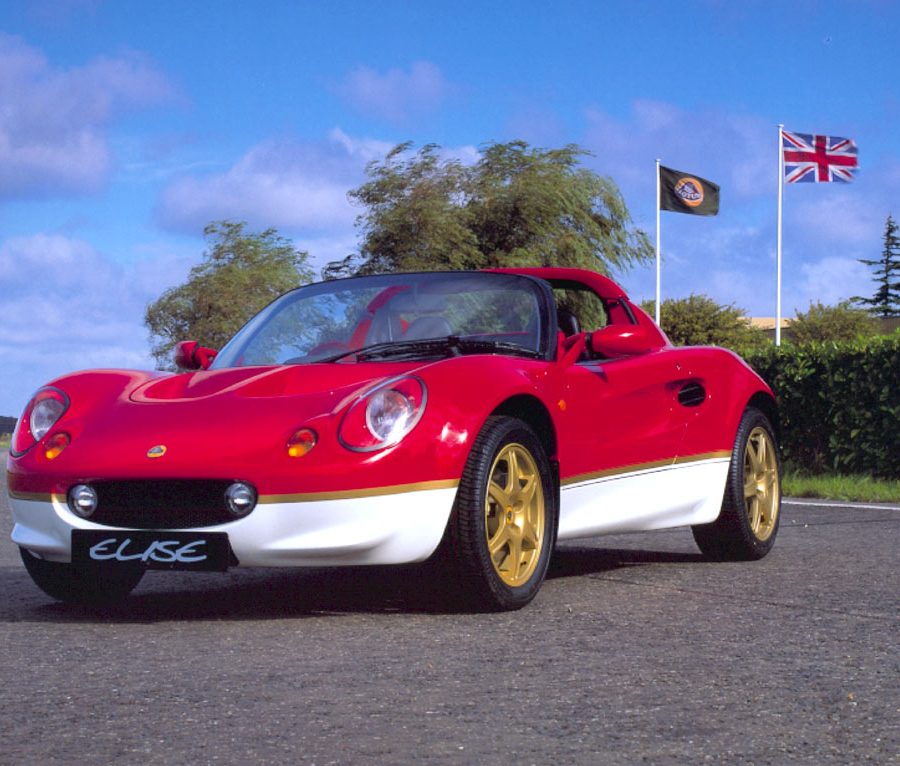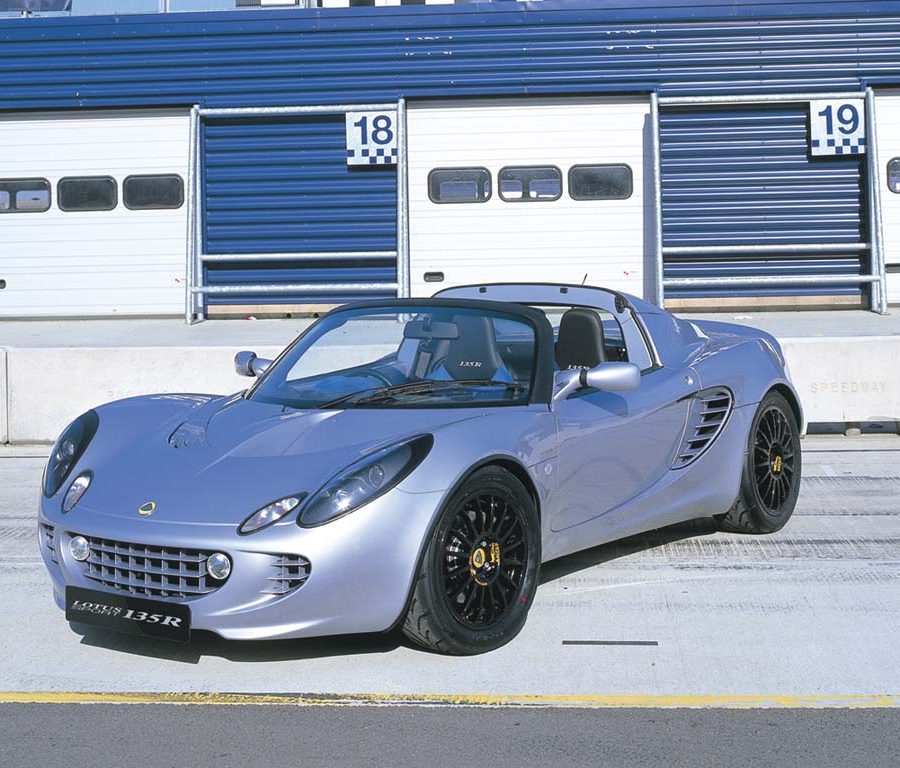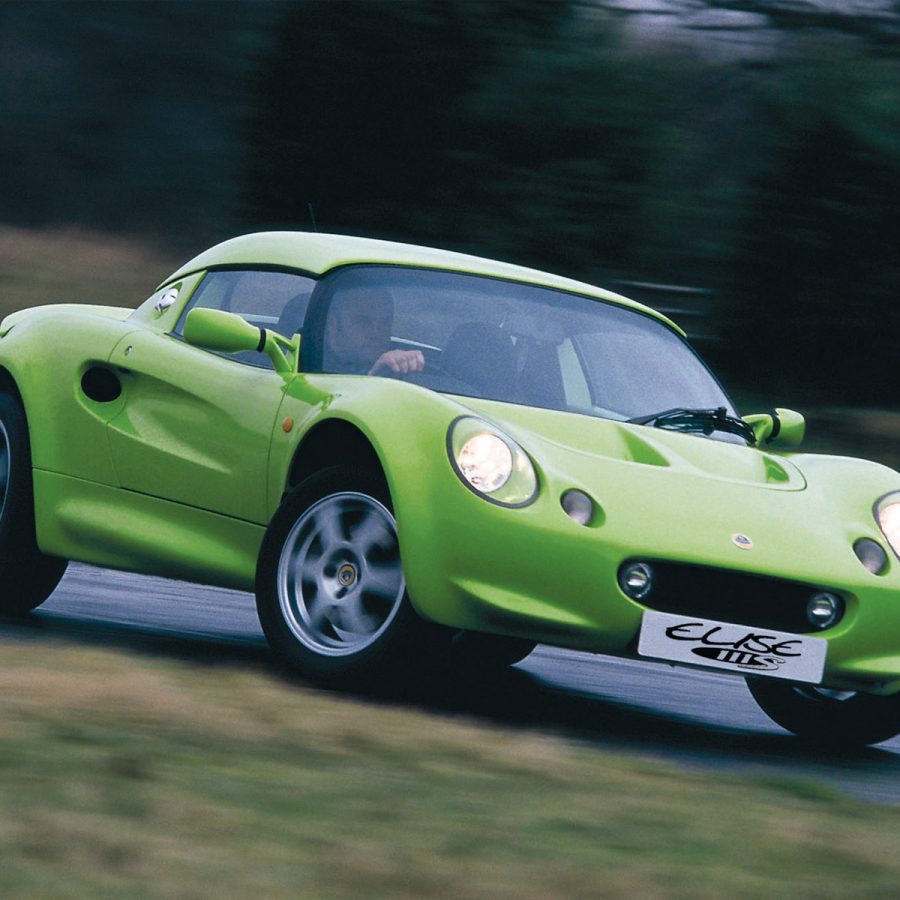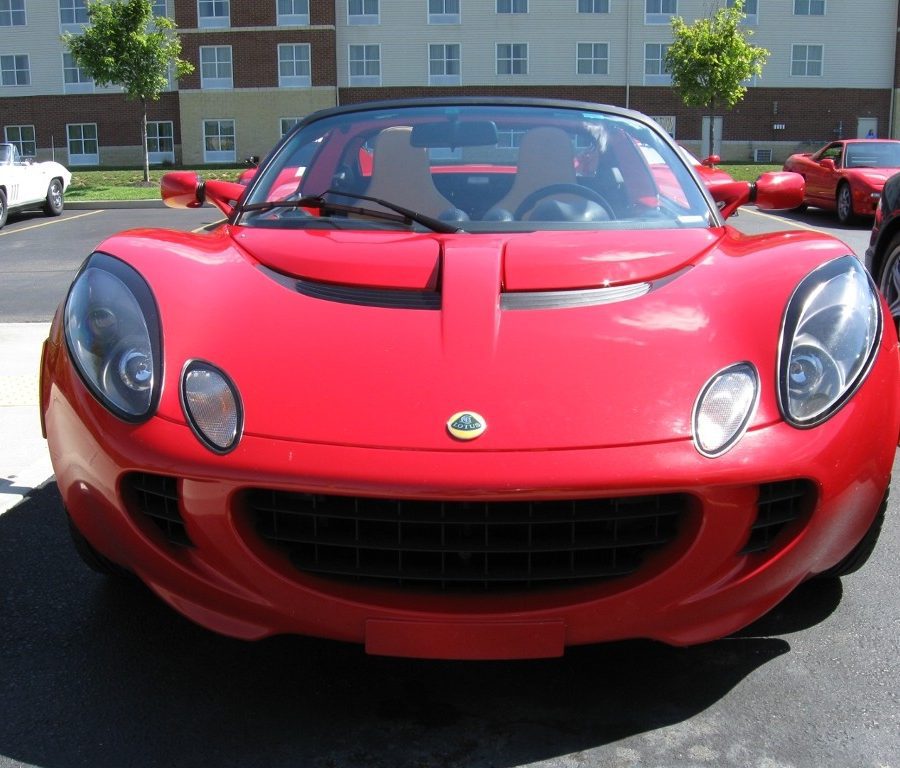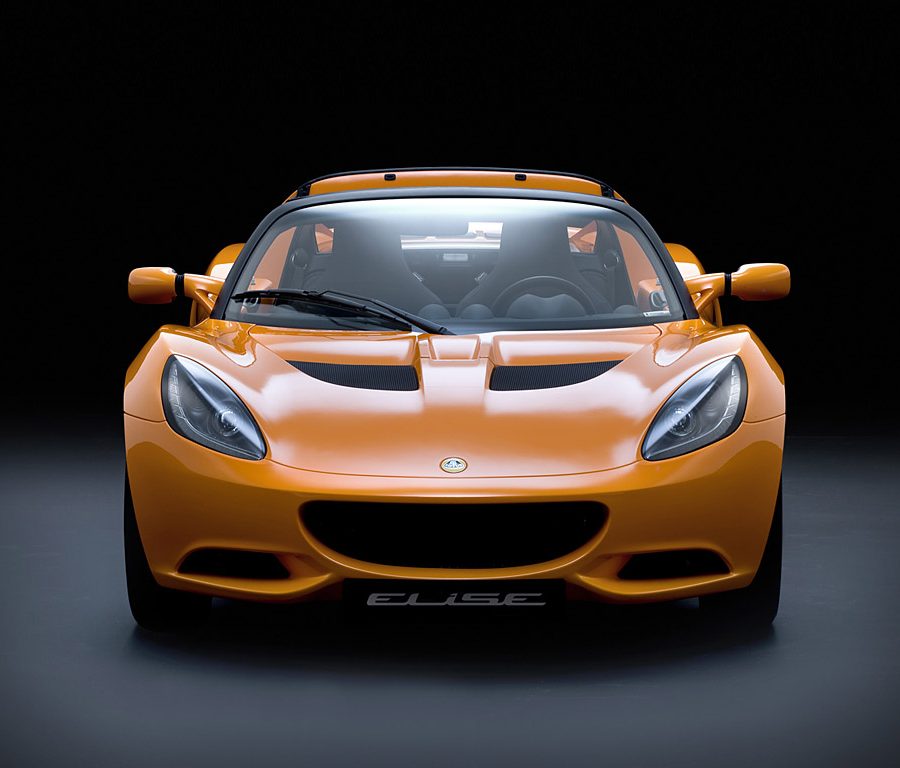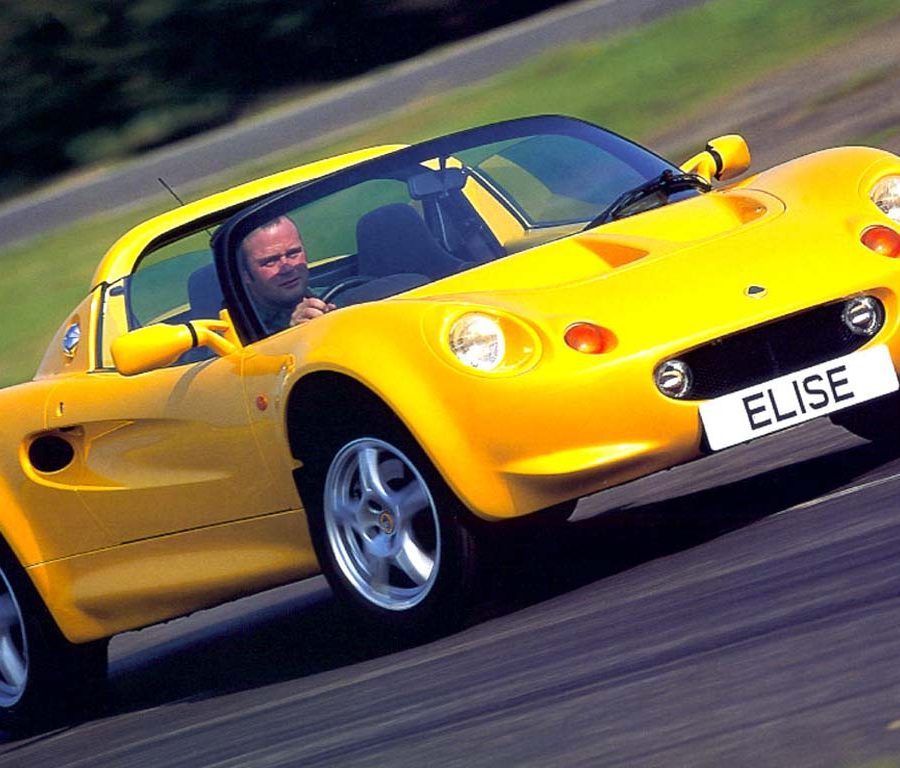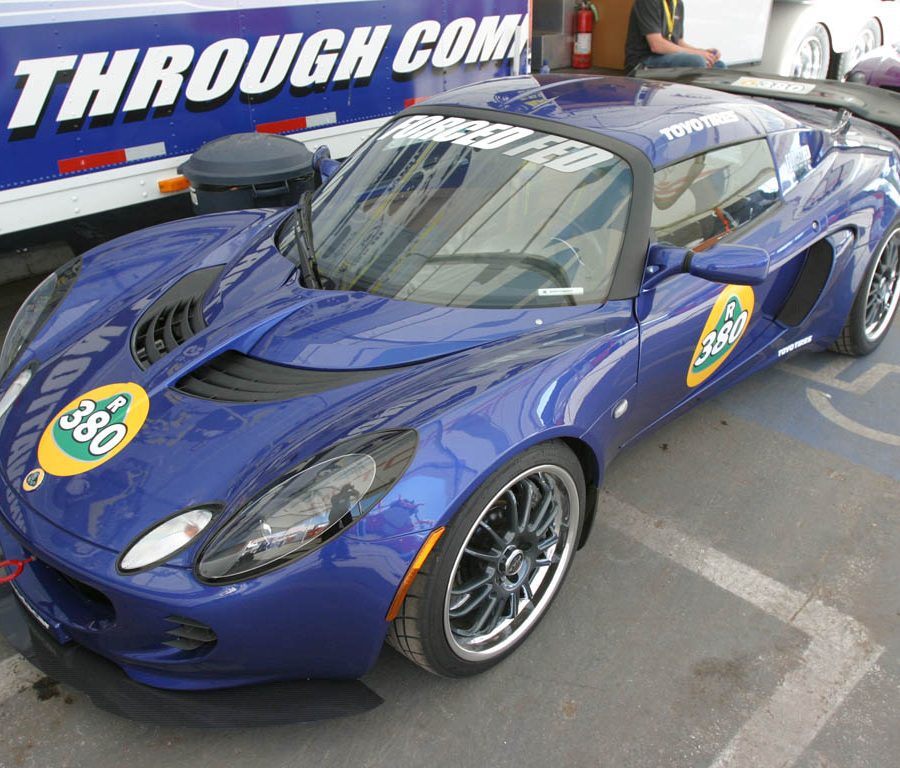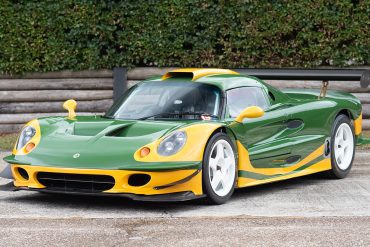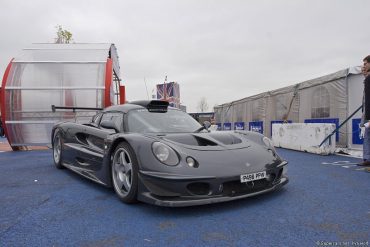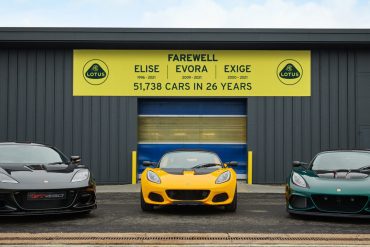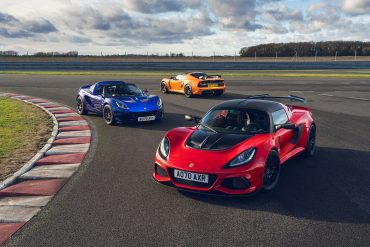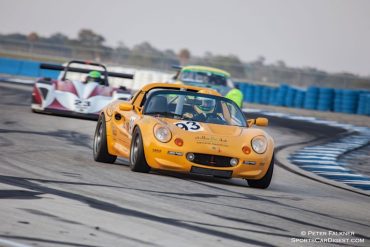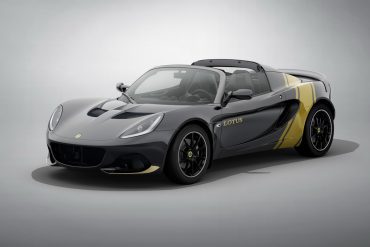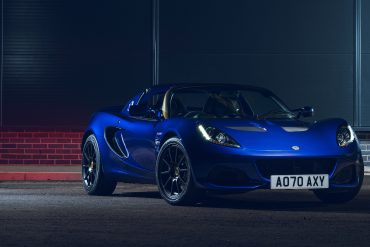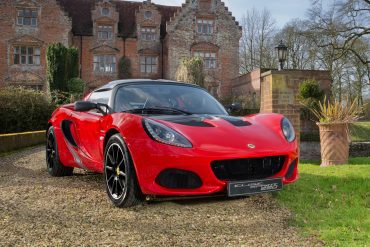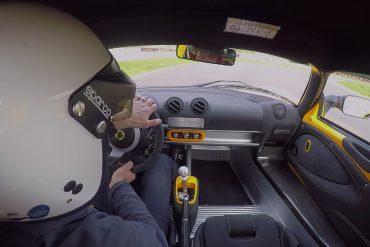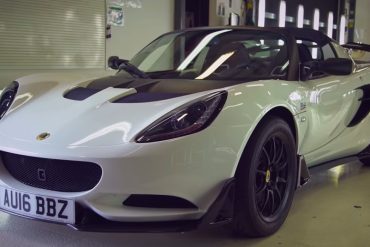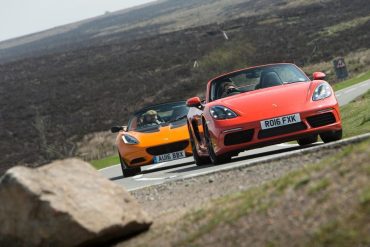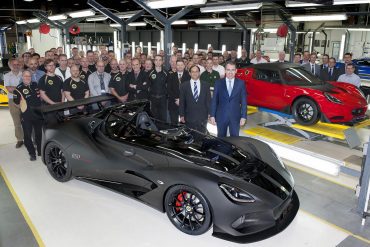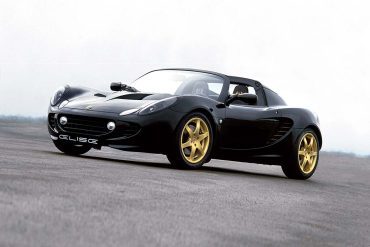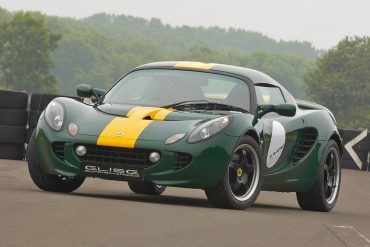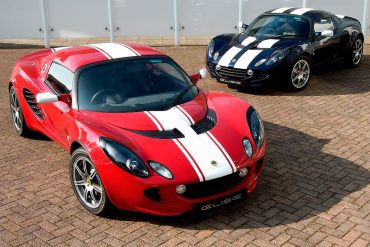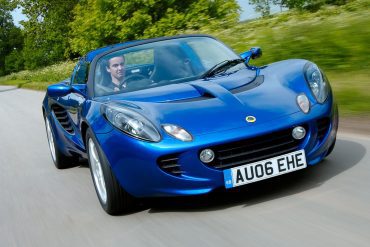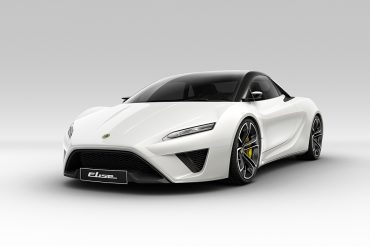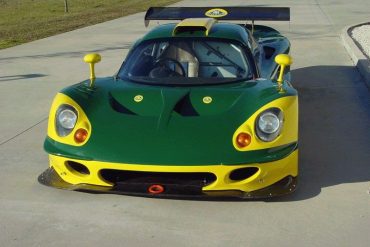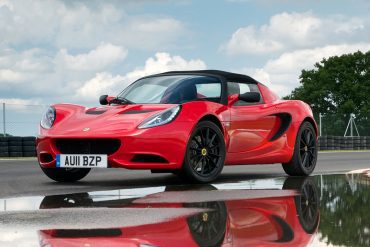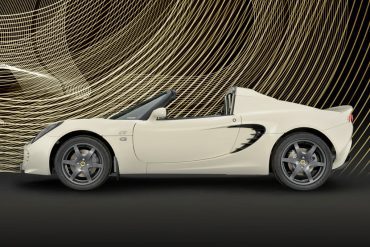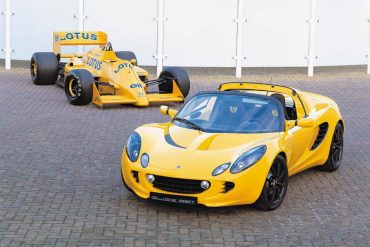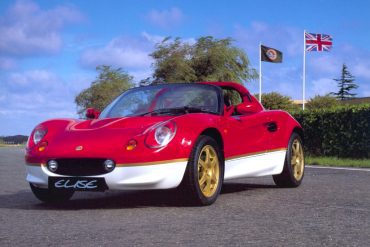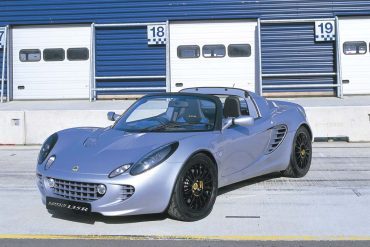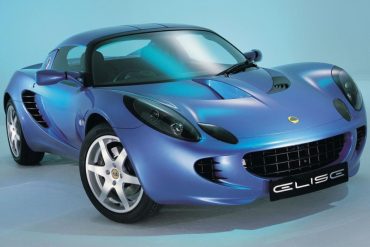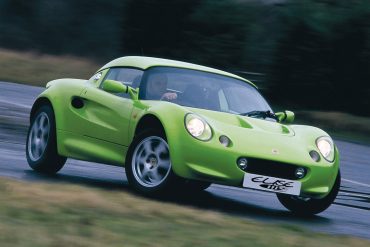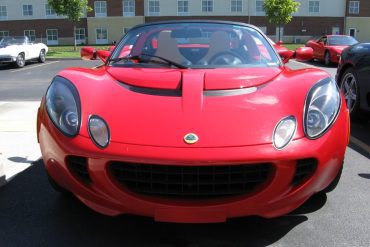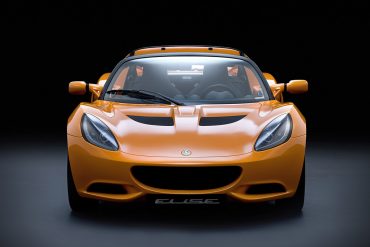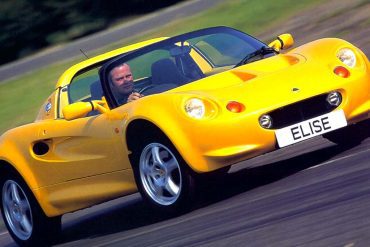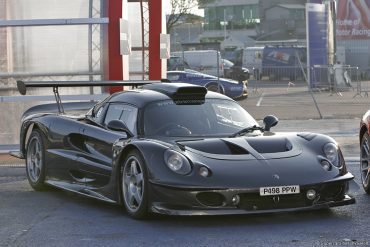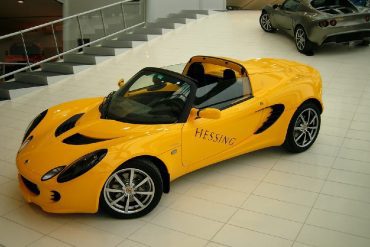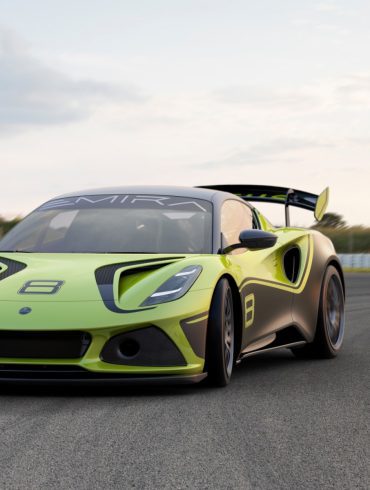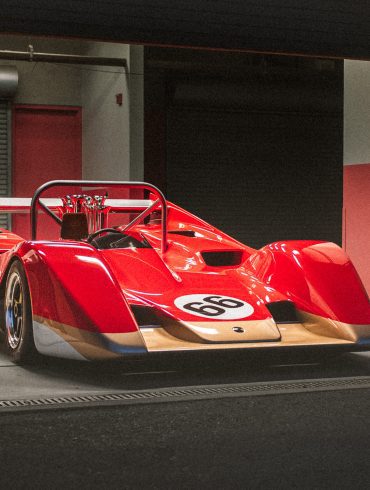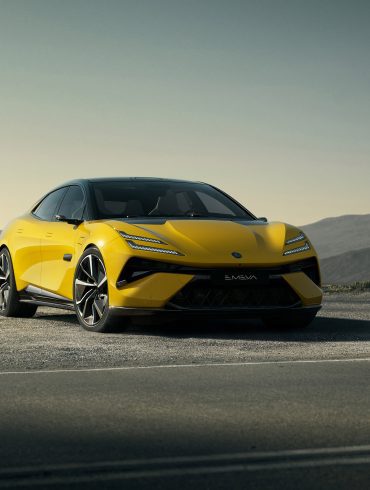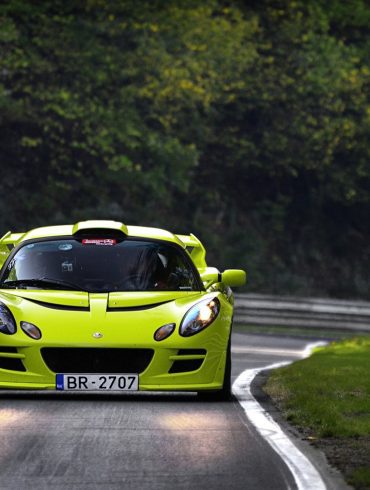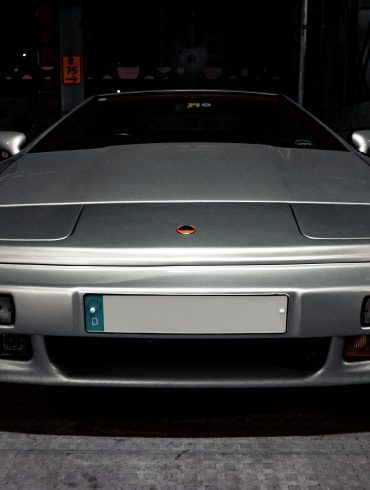2002 Lotus Elise Type 72 First raced in 1970 the Lotus Type 72 set the architecture for all modern day Formula 1 cars, pioneering the use of side mounted radiators and a front wedge nose cone which gave significant aerodynamic advantages. The Type 72 is arguably the most successful &...
Lotus Elise
A Street-Legal Go-Cart
1996–2023
Buckle up for a bare-bones thrill ride! The Lotus Elise throws out creature comforts for pure driving bliss, offering a lightweight experience that redefines what a sports car can be. The Elise is proof that driving doesn't need to be complicated to be fun.
Series 1 Elise / Series 2 Elise / Series 3 Elise / Models In-Depth / Specs & Performance / Recent News
The Ultimate Guide To The Lotus Elise: Every Variant, Specs, Reviews, Performance & More
When the Lotus Elise was launched, the first thing we all noted was just how light it was. The original Elise weighed 723kg (1,10 lbs), making it the lightest sports cars on sale at the time (by some margin). The remarkable weight was achieved by using the most advanced aluminum chassis and bonding aluminum parts using epoxy resin and riveting rather than traditional welding. The thickness of metal can be reduced from 3mm to 1.5mm. Lotus used aluminum disc brakes and glass fiber body shell which also help with lightness. The Elise got a mid engine layout, double wishbone suspension all around and extra-high torsional rigidity from that special chassis structure.
The result was quite simply that the Elise was the most involving, the most controllable and the most exciting car to drive. At the time, the motoring press was driving cars like the Ferrari F50 and McLaren F1, and yet they drove the Elise and couldn't stop talking about how it was absolutely perfect, the way a car should drive.
The Elise has been around a long time and it has had several iterations and lots of evolution from its humble beginnings. In 2000, Lotus introduced the Series 2 model, which used a modified Series 1 chassis and a Lotus-developed ECU (engine control unit). While all Elise Series 2 models were based on an 1.8L engine from either Rover or Toyota, outputs evolved from 118 HP to 218 HP and some versions benefited from a non-intercooled, turbocharged solution. In 2010 we saw the Mk3 Elise, which gave the car new headlights, new engines and a new gearbox.
Originally designed in 1994, the Elise has always been a two-door convertible sports car with rear-wheel drive and mid-placed engine. Over the years however it has seen special variants, generational changes and even a line of hardcore coupes known as the Exige. Below we take you through the full list of model variants.
Lotus Elise Mk1 Guide
The Lotus Elise is a true sportscar that has taken the world by storm, winning countless awards for handling, innovation and just pure fun. The Elise was first unveiled at the Frankfurt Motorshow in 1995 before entering production with first deliveries in August 1996. Named after the granddaughter of Lotus' chairman at that time, Romano Artioli, the Elise was based on an 1.8L Rover K-Series engine with three possible outputs, 118 HP, 143 HP and 179 HP. It was rear-wheel drive, had a 5-speed transmission, all round ventilated disc brakes and double wishbones suspension all-around.
The Lotus Elise introduced a range of technologies that revolutionized the automotive industry; such as a chassis made from extruded and bonded aluminum, a composite energy absorbing front crash structure and lightweight composite body panels. The whole car weighed in at half the weight of an average family saloon. This light weight bestowed the car with phenomenal acceleration and handling. In 1996 the Lotus Elise was easily pulling 1g in steady state cornering with standard production tyres and a 0-100km/h in 5.9 seconds.
In 1999, Lotus introduced us to the Elise 111S. is the car we're waiting for. Powered by a more powerful 1.8-litre K series VVC engine, it was more torquey and fun more of the time. It revved more cleanly and eagerly from mid to high rev range and the power was strong all the way to the 7,200 RPM redline. Lotus claimed the top speed improve to 133mph, 0-60mph to 5.3sec, 0-100mph to 14.4sec.
Lotus also introduced a more powerful car, known as the Lotus Elise Sport 190 during the first generation. It got a 190hp 1.8 litres high revving four cylinder that made the Elise good for a sprint from standstill to 60mph in only 4.3 seconds. This engine was originally developed by the collaboration between Rover and Caterham. Lotus engineers also upgraded the tires (now 225 Yokohama at the rear), wheels (now 16 inches), brakes (back to conventional cast-iron discs rather than the aluminum discs), retuned the suspensions coil springs and dampers and lowered the ride height. Handling became even more agile, and with that extra power it was easily the best Elise to date and our pick of the first series cars.
"...almost unbelievable grip and poise, with telepathic steering and a chassis that talks to you constantly."
Autocar
Lotus Elise Mk1 Basics
Years: 1996–2001
Layout: Transverse mid-engine, RWD
Body style: 2-door roadster
Engine: 1.8 L Rover K-series Inline 4
Wheelbase: 2,300 mm (90.6 in)
Length: 3,726 mm (146.7 in)
Width: 1,719 mm (67.7 in)
Height: 1,202 mm (47.3 in)
Weight: 725 kg ~ 755 kg
What They Said
"Because of its low weight, the Elise S1 lacked a brake servo and power steering, which gave it almost supernatural amounts of feel. Performance from theRover four-pot wasn't scintillating, with a 0-60 time of six seconds or so, but it never needed to be. "- Top Gear (retrospective review)
"...a car of almost unbelievable grip and poise, with telepathic steering and a chassis that talks to you constantly." - Evo Magazine
"The Elise redefined what a driver's car can do. It's lightweight, nimble, and the steering feedback is something every enthusiast should experience."- Motor Trend (retrospective)
Lotus Elise Mk1 Model Variants
Standard Series 1 Elise Variants
Lotus Elise Series 1 (1996 - 2001)
Lotus Elise 111S (1999 - 2001)
Special Edition Series 1 Elise Variants
Lotus Elise Sport 135 (1998 - 1999)
Lotus Elise Sport 160 (2000)
Lotus Elise Sport 190 (1999 - 2000)
Lotus 50th Anniversary Edition Elise (1999)
Lotus Type 49 Elise (1996 - 2001)
Lotus Type 79 Elise (1999)
Lotus Elise Millenium (2000)
Lotus 340R (2000)
Lotus Elise GT1 (1997 - 1998)
Lotus Elise (Series 1) Model Variants
Lotus Elise Series 1
Years: 1996-2001
Lotus: Lotus 111
Engine: 1796 cc inline 4
Power: 120 bhp @ 5,500 rpm
Torque: 122 ft/lbs @ 3,000 rpm
0-60 mph: 5.9 seconds
Top Speed: 126 mph
The original Elise was designed as a sports car to be appreciated by real driving enthusiasts, fashion leaders and those who really appreciate technology and innovation. The whole car weighed in at half the weight of an average family saloon. This light weight bestowed the car with phenomenal acceleration and handling.
Lotus Elise 111S
Years: 1999-2001
Lotus: Lotus M111
Engine: 1800 cc inline 4
Power: 143 bhp @ 7,000 rpm
Torque: 128.3 ft/lbs @ 4,500 rpm
0-60 mph: 5.4 seconds
Top Speed: 132 mph
The original Elise, called the Series 1 was augmented by a faster edition called the 111S, named after the Lotus type-number of the Elise — M111. Powered by a more powerful 1.8-litre K series VVC engine, this sporty new derivative had a close-ratio gearbox and enhanced handling. The 111S also received some cosmetic changes.
Limited & Special Edition Series 1 Elise Cars
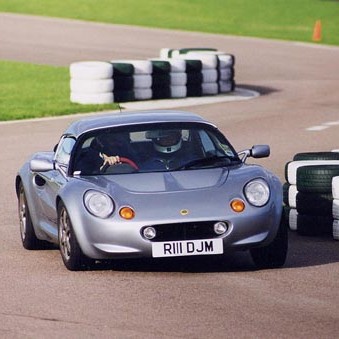
Lotus Elise Sport 135
Years: 1998-1999
Lotus: Sport 135
Engine: 1800 cc inline 4
Power: 145 bhp @ 7,000 rpm
Torque: 128.3 ft/lbs @ 4,500 rpm
0-60 mph: 5.4 seconds
Top Speed: 132 mph
The 135 had more torque than either the standard car or the 111S. It was also available with a close-ratio gearbox, exhaust upgrade, cast iron, drilled brake discs, headlamp covers, driving lights, corbeau sport seats, racing steering wheel, and Sport 135 body graphics. Lotus modification to the K series engine with mildly ported head.
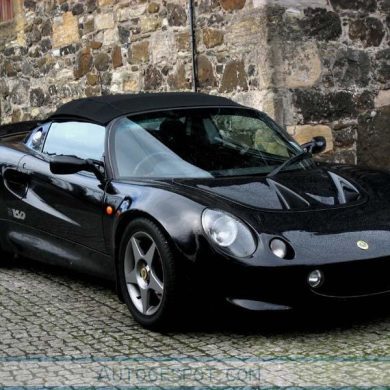
Lotus Elise Sport 160
Years: 2000
Lotus: Sport 160
Engine: 1800 cc inline 4
Power: 160 bhp @ 7,000 rpm
Torque: 128.3 ft/lbs @5,200 rpm
0-60 mph: – seconds
Top Speed: – mph
An improved version of Sport 135, with 160 horsepower thanks to revised engine management and head changes. Performance derivative had fixed valve timing engine. WVTA versions require airbox modification and sport exhaust fitment for full power release. Other features include new engine controller, sport suspension and race wheels.
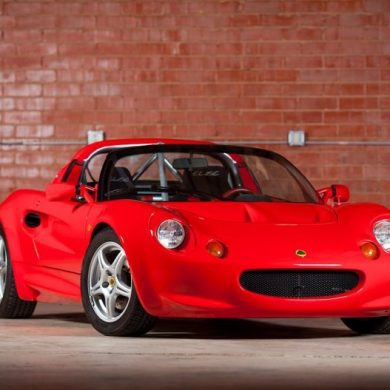
Lotus Elise Sport 190
Years: 1999-2000
Lotus: Sport 190
Engine: 1800 cc inline 4
Power: 190 bhp @ 7,000 rpm
Torque: 128.3 ft/lbs @5,200 rpm
0-60 mph: 4.3 seconds
Top Speed: 131 mph
Sports suspension, VHPD engine producing 190 bhp, no rear grilles, rollcage, faired-in headlights. More competent on track with sports suspension, wheels and tyres. Powered by a factory-upgraded 1.8 liter Rover K-series inline-four mated to a short ratio 5-speed manual gearbox. A race car for the road.
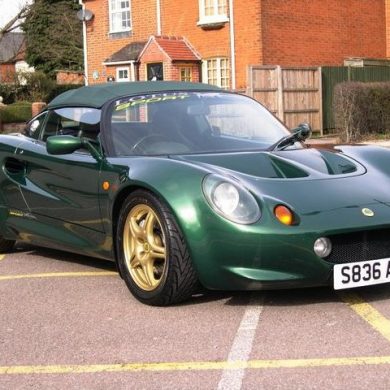
Lotus 50th Anniv. Elise
Years: 1999
Lotus: 50th Anniversary Elise
Engine: 1800 cc inline 4
Power: 190 bhp @ 7,000 rpm
Torque: 128.3 ft/lbs @5,200 rpm
0-60 mph: – seconds
Top Speed: – mph
Celebrating 50 years of Lotus cars. Anniversary green with gold wheels, green/raffia leather seats. Floor mats, gold decals, Anniversary decal on rear transom. Limited Edition to celebrate the 1st Lotus ever produced in 1948 by Colin Chapman. A 50 anniversary sticker is just above the exhaust. Seats are in green and beige leather.
Lotus Type 49 Elise
Years: 1996-2001
Lotus: Lotus Type 49
Engine: 1796 cc inline 4
Power: 120 bhp @ 5,500 rpm
Torque: 122 ft/lbs @ 3,000 rpm
0-60 mph: 5.9 seconds
Top Speed: 126 mph
A special edition Elise built to commemorate the great Type 49 grand prix car. The Elise 49 was painted with the same livery as the famous Lotus type 49 Grand Prix Formula One car (“Gold Leaf” red and white two-tone). Available based on either standard or 111S versions. All cars have gold painted 111S type road wheels.
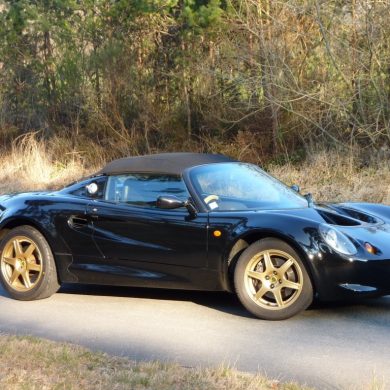
Lotus Type 79 Elise
Years: 1999
Lotus: Lotus Type 79
Engine: 1796 cc inline 4
Power: 120 bhp @ 5,500 rpm
Torque: 122 ft/lbs @ 3,000 rpm
0-60 mph: 5.9 seconds
Top Speed: 126 mph
Available based on either standard or 111S versions, it was known as the “JPS” black/gold car. Had a black body color. All cars have gold painted grilles as follows; radiator air intake, radiator outlet, engine lid outlet, rear clamshell recess, engine bay intake. All cars have gold painted 111S type road wheels, black and gold Alcantara steering wheel.
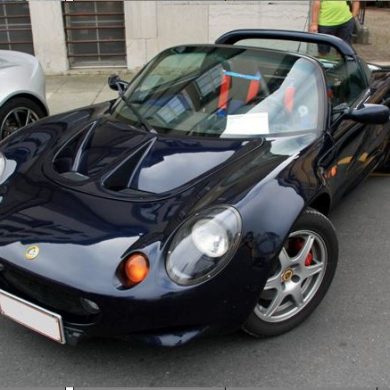
Lotus Elise Millenium
Years: 2000
Lotus: Type 111
Engine: 1796 cc inline 4
Power: 120 bhp @ 5,500 rpm
Torque: 122 ft/lbs @ 3,000 rpm
0-60 mph: 5.9 seconds
Top Speed: 126 mph
Available based on either standard or 111S versions. Atlantis Blue body colour. All cars have blue Alcantara steering wheel pad and sill trim panels, 111S type black leather seats with blue Alcantara centres. Standard versions also have 111S type road wheels, rear wheelarch spats and headlamp covers. A range of dealer fitted accessories.
Lotus 340R
Years: 2000
Lotus: Lotus 111
Engine: 1796 cc inline 4
Power: 190 bhp @ 7,800 rpm
Torque: 146 ft lbs @ 5000 rpm
0-60 mph: 4.5 seconds
Top Speed: 126 mph
The open-top 340R began as a concept car in 1998. Like its first-generation Elise brethren, the Lotus 340R adopted a 1.8-liter Rover K-series four-cylinder, which in “Very High Performance Derivative” equated to 177 horsepower and 126 lb-ft. of torque. With very little bodywork it was super light and very fast (0-60 in 4.5 seconds in the year 2000).
Lotus Elise GT1
Years: 1997-1998
Lotus: Lotus 115
Engine: 6.0-liter LT5 V8
Power: 350 bhp @ 6,500 rpm
Torque: 295 ft/lbs @ 4,250 rpm
0-60 mph: 3.8 seconds
Top Speed: 198.8 mph
Lotus wanted to go racing in Le Mans (stop me if you have heard this one before). Of course in the 1990s that meant at least one of the “racing” cars had to be road legal. Cue the Lotus GT1. The Lotus Elise GT1 utilized a production aluminum chassis with custom carbon fiber body. Out went the four, in came a twin-turbo 6.0-liter (from C4 Corvette).
Lotus Elise Mk2 Guide
In 2000, Lotus introduced the Series 2 model, which used a modified Series 1 chassis and a Lotus-developed ECU (engine control unit). While all Elise Series 2 models were based on an 1.8L engine from either Rover or Toyota, outputs evolved from 118 HP to 218 HP and some versions benefited from a non-intercooled, turbocharged solution. The updated Elise got some important design and body modifications. The new bodywork improved aerodynamic downforce by incorporating ground-effect diffuser at the bottom of rear end and unlike the previous 111S, the rear spoiler in the Mk 2 Elise was an integral part of the glass fiber body. Moreover, the body is shaped such that the distribution of downforce coincides with the distribution of weight, creating a more consistent handling experience at all speeds.
The second Mk 2 variant to come along was the S3 Elise 111. It was basically a standard Elise equipped with the VVC (variable valve control) version of the Rover K-series engine, offering considerably more punch hence performance. The engine was revised, now producing 160hp, a 15hp jump from the Mk 1 111S and full 40hp more than the standard Elise. 0-60mph times were almost a half-second faster than the base Elise and coupled with the newly revised ratios in the 5-speed, the Elise 111 was a wonderful all around performance car.
In 2004 we saw an important Elise in the S2 111R, a car built for the U.S market. In order to let the Elise to enter the largest sports car market in the world, Lotus decided to find another engine because the K-series engine did not comply with the emission regulations. They first contacted Honda for its 2.0-litre i-VTEC engine, but it was Toyota who eventually agreed to supply its 1.8-litre VVTL-i engine to Lotus, together with a 6-speed gearbox.
2007 saw the introduction of a new base model, now called the Elise S. Loss of the Rover K series engine had temporarily created a hole in Lotus’ portfolio and its disappearance from the range was not good news for entry level sports car lovers across the globe. The challenge of plugging the gap has now been addressed with the launch of the new Lotus Elise S. The other exciting model in the second generation Elise was the 2008 Lotus Elise SC. Supercharging is not a new idea to the Elise family, as its sister car Exige S already employed this technology to improve power and torque. This was the first time an Elise model had supercharging and it was a beast of a car. Lotus claimed the Elise SC can top 150 mph, accelerate from 0-60 mph in 4.4 seconds and do 0-100 mph in 10.7 seconds.
takes the purity of the original and adds a dose of usability and more power."
Autocar
Lotus Elise Mk2 Basics
Years: 2001-2011
Layout: Transverse mid-engine, RWD
Body style: 2-door roadster
Engine: 1.8 L Rover K-series I4, 1.8 L Toyota 1ZZ-FE I4, 1.8 L Toyota 2ZZ-GE I4
Wheelbase: 2,300 mm (90.6 in)
Length: 3,785 mm (149 in)
Width: 1,719 mm (67.7 in)
Height: 2002–07: 1,143 mm (45.0 in), 2008–2011: 1,117 mm (44.0 in)
Weight: 860 kg (1,896 lb) – 910 kg (2,006 lb)
What They Said
The Toyota engine provides a significant performance boost, making the Elise feel genuinely fast." - Evo Magazine
"While slightly less raw than the S1, the Mk2 still delivers an incredibly engaging and communicative driving experience." - Car and Driver
"The Elise remains true to its lightweight roots, delivering unparalleled agility and handling." - Motor Trend
"It's the perfect example of how less can be more when it comes to building a sports car." - Top Gear
"A reminder that driving thrills aren't just about horsepower, but about balance, feedback, and driver involvement." - Autoblog
Lotus Elise Mk2 Model Variants
Standard Series 2 Elise Variants
Lotus Lotus S2 Elise (2000 - 2007)
Lotus Lotus S2 Elise 111 (2002 - 2004)
Lotus Lotus S2 Elise 111 S (2002 - 2004)
Lotus Elise S2 111R (Federal Elise) (2004 - 2008)
Lotus Elise (2008) (2008 - 2011)
Lotus Elise SC (2008 - 2011)
Lotus Elise S (S2) (2007 - 2008)
Lotus Elise R (2008)
Special Edition Series 2 Elise Variants
Lotus Elise S2 Sport 135 (2002)
Lotus Elise S2 Sport 190 (2002)
Lotus Elise S2 Type 72 (2002)
Lotus Elise S2 Type 25 (2002)
Lotus Elise S2 Type 135R (2003)
Lotus Elise S2 Type 23 (2003)
Lotus Elise Sports Racer (S2) (2005)
Lotus Elise S2 Type 49 (2002)
Lotus Elise S2 Type 99T (2003)
Lotus Elise S2 72D (2007)
Lotus Elise S 40th Anniversary (2007 - 2008)
Lotus Elise S2 California Special (2008)
Lotus Elise Type 25 Jim Clark (2008)
Lotus Elise S2 Club Racer (2009)
Lotus Sport 2 - Eleven (2007 - 2011)
Lotus Elise (Series 2) Models: In Depth
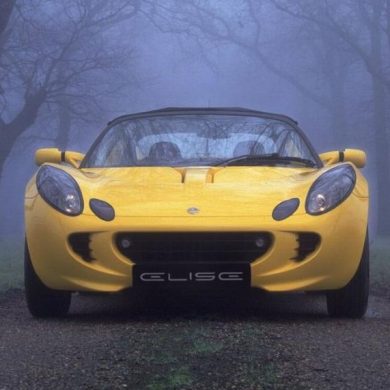
Lotus S2 Elise
Years: 2000-2007
Lotus: Type 111
Engine: 1,795 cc inline 4
Power: 120 bhp @ 5,600 rpm
Torque: 124 ft/lbs @ 3,500 rpm
0-60 mph: 5.5 seconds
Top Speed: 132 mph
Series 2 Elise launched October 2000 was an updated Series 1 using a modified version of the Series 1 chassis to meet new European crash regulations. Same K-series engine with new Lotus ECU. Rated at 120 bhp.
Lotus S2 Elise 111
Years: 2002-2004
Lotus: Type 111
Engine: 1,795 cc inline 4
Power: 156 bhp @ 5,600 rpm
Torque: 124 ft/lbs @ 3,500 rpm
0-60 mph: 5.1 seconds
Top Speed: 132 mph
111 and 111S are basically the same car. They include a more powerful 156 hp VVC engine, closer ratio gearbox, new exhaust muffler with round tailpipes and flap valve; intake resonator box; oil/water heat exchanger.
Lotus S2 Elise 111 S
Years: 2002-2004
Lotus: Type 111
Engine: 1,795 cc inline 4
Power: 156 bhp @ 5,600 rpm
Torque: 124 ft/lbs @ 3,500 rpm
0-60 mph: 5.1 seconds
Top Speed: 132 mph
This car is identical to the 111 but features leather seats and trim, an upgraded stereo and carpets. The VVC engine and the close-ratio gearbox combine to give aggressive power delivery and rate of acceleration.
Elise S2 111R (Federal)
Years: 2004-2008
Lotus: Type 111
Engine: 1,795 cc inline 4
Power: 189 bhp @ 7,600 rpm
Torque: 132.8 ft/lbs @ 6,800 rpm
0-60 mph: 4.8 seconds
Top Speed: 124 mph
In 2004, Lotus took to bold move and brought the Elise overseas to America. At the same time they secured a deal with Toyota to power the new car with the same 2ZZ-GE engine from the Celica GT-S.
Lotus Elise (2008)
Years: 2008-2011
Lotus: Type 111
Engine: 1,795 cc inline 4
Power: 189 bhp @ 7,600 rpm
Torque: 132.8 ft/lbs @ 6,800 rpm
0-60 mph: 4.8 seconds
Top Speed: 124 mph
Lotus continued to provide a naturally aspirated Elise producing 189 hp (141 kW). For 2008, the Lotus Elise gets revised gauges and a few new accessories. It has the Lotus-tuned 1.8-liter 4-cylinder that gets variable cam timing and lift tech.
Lotus Elise SC
Years: 2008-2011
Lotus: Type 111
Engine: 1,795 cc supercharged inline 4
Power: 217 bhp @ 8,000 rpm
Torque: 156 ft/lbs @ 5,000 rpm
0-60 mph: 4.4 seconds
Top Speed: 150 mph
This is the most powerful production version of the Elise to date with 217 hp. A new non-intercooled installation of the current Elise’s 1.8-litre 2-ZZ VVTL-i engine. It has sharp steering, quick responses, huge grip.
Lotus Elise S (S2)
Years: 2007-2008
Lotus: Type 111
Engine: 1,795 cc inline 4
Power: 136 bhp @ 6,200 rpm
Torque: 126.9 ft/lbs @ 4,200 rpm
0-60 mph: 5.9 seconds
Top Speed: 124 mph
As the new entry-level car, the Elise S was not fastest Elise but the acceleration, performance and handling was class leading. Lotus shoehorned in a 1.8-liter Variable Valve Timing Toyota engine.
Lotus Elise R
Years: 2008
Lotus: Type 111
Engine: 1,795 cc inline 4
Power: 189 bhp @ 7,600 rpm
Torque: 132.8 ft/lbs @ 6,800 rpm
0-60 mph: 4.8 seconds
Top Speed: 124 mph
The 111R renamed Elise R. Part of the US federalization program meant minor changes across the board to update the Elise. Not much to see here in terms of improvements .
Limited & Special Edition Series 2 Elise Cars
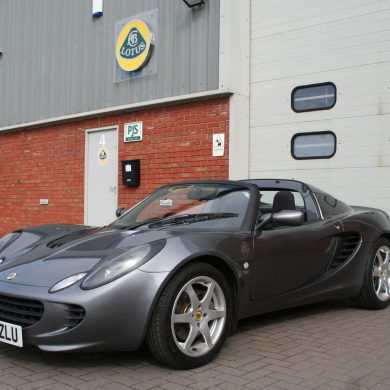
Lotus Elise S2 Sport 135
Years: 2002
Lotus: Type 111
Engine: 1,795 cc inline 4
Power: 189 bhp @ 7,600 rpm
Torque: 132.8 ft/lbs @ 6,800 rpm
0-60 mph: 4.8 seconds
Top Speed: 124 mph
The 135 upgrade kit gives the Elise 135 hp at 6,200 rpm and 175 Nm of torque at 4,850 rpm, 0-62 mph in 5.4 secs, 0-100 mph in 14.9 secs and a maximum speed of 129 mph.
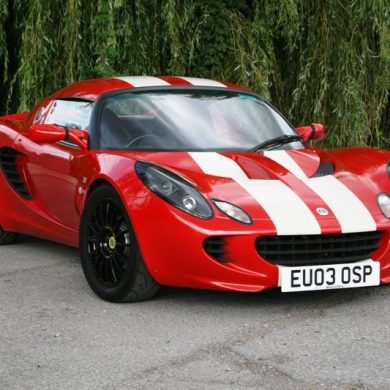
Lotus Elise S2 Sport 190
Years: 2002
Lotus: Type 111
Engine: 1,795 cc inline 4
Power: 190 bhp @ 7,600 rpm
Torque: 132.8 ft/lbs @ 6,800 rpm
0-60 mph: 4.8 seconds
Top Speed: 124 mph
Each S2 Sport 190 car is tailor made by Lotus Motorsport and although not strictly road legal, by deleting certain standard items the car can be made road legal. A real peach of a performance car.
Lotus Elise S2 Type 72
Years: 2002
Lotus: Type 111
Engine: 1,795 cc inline 4
Power: 120 bhp @ 5,500 rpm
Torque: 124 ft/lbs @ 3,500-4,500 rpm
0-60 mph: 5.7 seconds
Top Speed: 125 mph
The Elise Type 72 reflects the racing heritage of the Type 72 with the Black and Gold livery. The two gold heritage laurels on either side of the metallic Black bodywork, like on the wing of Type 72.
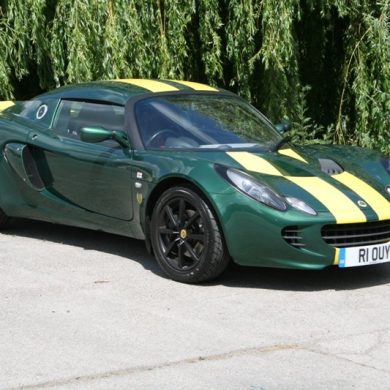
Lotus Elise S2 Type 25
Years: 2002
Lotus: Type 111
Engine: 1,795 cc inline 4
Power: 122 bhp @ 5,500 rpm
Torque: 124 ft/lbs @ 3,500-4,500 rpm
0-60 mph: 5.7 seconds
Top Speed: 125 mph
The Lotus Elise Type 25 commemorates 40 years since the groundbreaking Type 25 won its first Grand Prix changing the racing world forever. Only 50 cars were made so it is super rare.
Lotus Elise S2 Type 135R
Years: 2003
Lotus: Type 111
Engine: 1,795 cc inline 4
Power: 135 bhp @ 6,250 rpm
Torque: 126.1 ft/lbs @ 4,800 rpm
0-60 mph: 5.2 seconds
Top Speed: 129 mph
Developed by Lotus Sport and Performance in conjunction with the Lotus Ride and Handling team, the Lotus Sport Elise 135R has been designed to provide ultimate performance both on and off the track
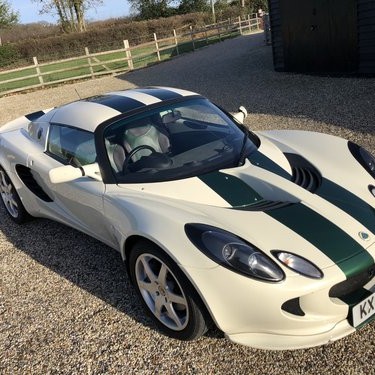
Lotus Elise S2 Type 23
Years: 2003
Lotus: Type 111
Engine: 1,795 cc inline 4
Power: 120 bhp @ 5,500 rpm
Torque: 124 ft/lbs @ 3,500-4,500 rpm
0-60 mph: 5.7 seconds
Top Speed: 125 mph
Lotus Elise Heritage Type 23 this was simply as a new paint scheme and as a limited edition run.
Lotus Elise Sports Racer (S2)
Years: 2005
Lotus: Type 111
Engine: 1,795 cc inline 4
Power: 189 bhp @ 7,600 rpm
Torque: 132.8 ft/lbs @ 6,800 rpm
0-60 mph: 4.9 seconds
Top Speed: 125 mph
The Elise Sports Racer was a limited production run, across the two colors, of 199 units worldwide. With a modified Honda Celica engine producing a maximum power output of 189 hp.
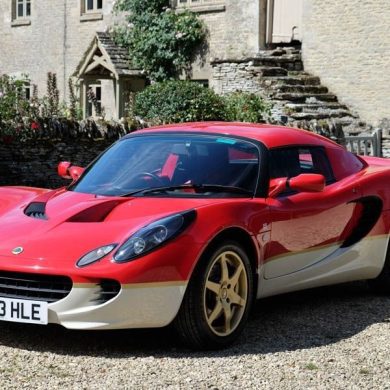
Lotus Elise S2 Type 49
Years: 2002
Lotus: Type 111
Engine: 1,795 cc inline 4
Power: 122 bhp @ 7,600 rpm
Torque: 124 ft/lbs @ 3,500 rpm
0-60 mph: 5.7 seconds
Top Speed: 125 mph
Limited edition: Only 100 cars (individually numbered) produced for the UK market, cars on sale in Europe and rest of the world are not limited. A unique heritage plate stating the limited edition number of your Type 49.
Lotus Elise S2 Type 99T
Years: 2003
Lotus: Type 111
Engine: 1,796 cc inline 4
Power: 160 bhp @ 7,500 rpm
Torque: 129.1 ft/lbs @ 3,500-4,650 rpm
0-60 mph: 5.1 seconds
Top Speed: 131.7 mph
The Lotus 99T F1 car was the last Lotus to ever win a Grand Prix. Painted in unique ‘Saffron Yellow’ the Elise Type 99T commemorates one of the most recognizable cars in the history of Formula One.
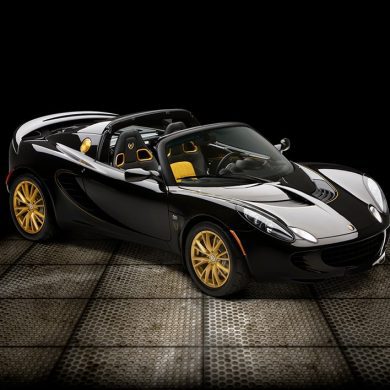
Lotus Elise S2 72D
Years: 2007
Lotus: Type 111
Engine: 1,796 cc inline 4
Power: 189 bhp @ 7,600 rpm
Torque: 132.8 ft/lbs @ 6,800 rpm
0-60 mph: 4.9 seconds
Top Speed: 125 mph
35th Anniversary Commemorative Edition. Collectible Edition memorializes the Lotus 72, the car that the legendary Emerson Fittipaldi proved unstoppable, winning five of eleven races in 1972. 50 made.
Lotus Elise S 40th Anniv
Years: 2007-2008
Lotus: Type 111
Engine: 1,795 cc inline 4
Power: 136 bhp @ 6,200 rpm
Torque: 126.9 ft/lbs @ 4,200 rpm
0-60 mph: 5.9 seconds
Top Speed: 124 mph
Limited edition (50 cars) for Mainland Europe – the Lotus Elise S 40th Anniversary Limited Edition. Based on the entry-level Elise S it commemorates the 40th anniversary of production at Hethel in 2007.
Lotus Elise S2 California
Years: 2008
Lotus: Type 111
Engine: 1,795 cc inline 4
Power: 189 bhp @ 7,600 rpm
Torque: 132.8 ft/lbs @ 6,800 rpm
0-60 mph: 4.9 seconds
Top Speed: 125 mph
The 2008 Limited California Special Edition of the Lotus Elise features significant bodywork and trim upgrades designed specifically for the lifestyle market. Initially be offered in a limited quantity of 50 units.
Lotus Elise Type 25 Jim Clark
Years: 2008
Lotus: Type 111
Engine: 1,795 cc inline 4
Power: 189 bhp @ 7,600 rpm
Torque: 132.8 ft/lbs @ 6,800 rpm
0-60 mph: 4.9 seconds
Top Speed: 125 mph
In tribute to Jim Clark’s achievements, Lotus, in association with Classic Team Lotus, is produced the Clark Type 25 Elise SC. Limited to 50 units. Draws upon many styling cues from the Type 25 Formula 1 car in 1963.
Lotus Elise S2 Club Racer
Years: 2009
Lotus: Type 111
Engine: 1,795 cc inline 4
Power: 136 bhp @ 6,200 rpm
Torque: 126.9 ft/lbs @ 4,200 rpm
0-60 mph: 5.9 seconds
Top Speed: 124 mph
Lotus took four of the classic color schemes used by Lotus in the ’60s (Elite Yellow, Carbon Grey, Sky Blue and Old English White) and combined them with exclusive Club Racer interior design.
Lotus Sport 2-Eleven
Years: 2007-2011
Lotus: Type 111
Engine: 1,795 cc supercharged inline 4
Power: 252 bhp @ 8,000 rpm
Torque: 178.5 ft/lbs @ 7,000 rpm
0-60 mph: 3.8 seconds
Top Speed: 155 mph
The car weighs 745kg when ready to drive and has 252 bhp from its supercharged and intercooled 1796 cc engine. The 2-Eleven uses a high-sided variant of the Elise’s chassis structure featuring epoxy bonded aluminum alloy extrusions with modified Exige S based running gear.
Lotus Elise Mk3 Guide
The third generation Lotus Elise isn't really a third generation in any official capacity. It is different enough so most pundits call it the Mk 2 Elise, and so do we. Lotus called it Series 3, the 2010 Lotus Elise shows some important improvements over the Series 2 model.
It had a smaller 1.6-liter from Toyota with 136 hp and a lovely rev-happy nature. Lotus quickly offered a naturally aspirated 1.8-liter engine as well as the same 1.8 liter with supercharger.
On the inside things stayed pretty much the same. In 2017 Lotus updated a few more things, once again aiming to make the faster and lighter.
The Elise Cup released in 2017 was also named the Cup 260 as it was based on the Cup 250, a model released in 2016. The exterior included a redesigned front bumper that had a wider and taller center grille. It made the Elise a little more aggressive and more modern. The Cup 260 kept the aggressive carbon-fiber side skirts from the Cup 250 and looked like a real racer.
"The Elise remains one of the most focused and engaging sports cars on the market."
Car and Driver
Lotus Elise Mk3 Basics
Years: 2011-2023
Layout: Transverse mid-engine, RWD
Body style: 2-door roadster
Engine: 1.6 L Toyota 1ZR-FAE I4, 1.8 L Toyota 2ZZ-GE I4, 1.8 L Toyota 2ZR-FE I4
Wheelbase: 2,300 mm (90.6 in)
Length: 3,824 mm (150.6 in) / Width: 1,719 mm (67.7 in)
Height: 1,117 mm (44.0 in)
Weight: 866 kg (1,909 lb) – 914 kg (2,015 lb)
What They Said
"The handling is still sublime, and even with the supercharged engine, the weight remains impressively low." - Autocar
"It's a testament to the original concept that the Elise still feels relevant and exciting after so many years." - Evo Magazine
"The new look may divide opinions, but the Elise's spirit remains intact." - Top Gear
Lotus Elise Mk3 Model Variants
Standard Series 3 Elise Variants
Lotus Elise S3 (2011)
Lotus Elise SC RGB Special (2011)
Lotus Elise R (2011)
Lotus Elise SC (2011)
Lotus Elise SC Final Edition (2011)
Lotus Elise S (2012)
Lotus Elise Club Racer (2012)
Lotus Elise Cup 220 (2015 - Present)
Lotus Elise Sprint (2017 - 2018)
Lotus Elise Sprint 220 (2017 - 2018)
Lotus Elise Sport 220 (2017 - Present)
Special Edition Series 3 Elise Variants
Lotus Elise S 20th Anniversary (2015)
Lotus Elise 250 Special Edition (2016 - 2017)
Lotus Elise Race 250 (2016 - 2017)
Lotus Elise Cup 250 (2016 - 2017)
Lotus Elise Cup 250 (2017 - 2018)
Lotus Elise Cup 250 GP Edition (2018)
Lotus Elise Cup 260 (2018)
Lotus Elise (Series 3) Models: In Depth
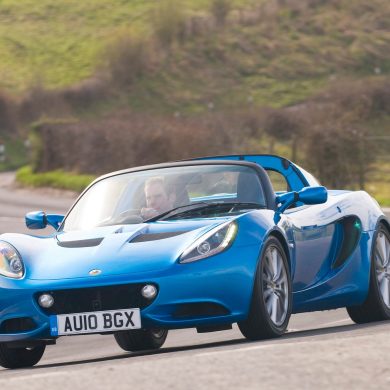
Lotus Elise S3
Years: 2011
Lotus: Type 121
Engine: 1.6 L Toyota 1ZR-FAE I4
Power: 136 bhp @ 6,200 rpm
Torque: 118 ft/lbs @ 4,400 rpm
0-60 mph: 6.7 seconds
Top Speed: 124 mph
The 2011 Elise range got a design refresh as well as a number of technical improvements. The highlight was a new 1ZR-FAE 1.6 litre engine with Valvematic and Dual VVT-I technology to optimize the performance and efficiency of the engine and a new 6 speed close ratio gearbox. Several other interior and exterior updates came with it.
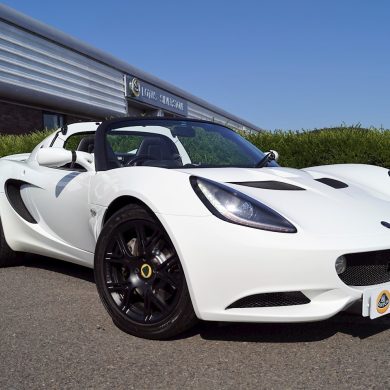
Lotus Elise SC RGB Special
Years: 2011
Lotus: Type 121
Engine: 1,795 cc supercharged inline 4
Power: 217 bhp @ 6,200 rpm
Torque: 126.9 ft/lbs @ 4,200 rpm
0-60 mph: 4.3 seconds
Top Speed: 124 mph
Made in celebration the legendary input of Roger Becker (RGB) who retired in January 2010 following 44 years of service. Lotus made a series of Lotus Elise and Lotus Exige sports cars in bespoke RGB Special Edition specification. Come with Touring and Sports packages and available in four colors.
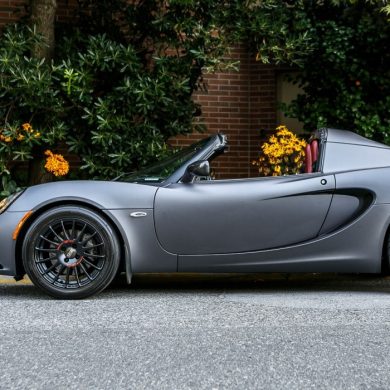
Lotus Elise R
Years: 2011
Lotus: Type 121
Engine: 1.8 L Toyota 2ZZ-GE I4
Power: 194 bhp @ 6,200 rpm
Torque: 118 ft/lbs @ 4,400 rpm
0-60 mph: 6.7 seconds
Top Speed: 124 mph
1.8 liter, 4-cylinder engine with 194 hp and 133 ft.-lbs. of torque. The North American model also gets additional updates like the evolution body design incorporating new front clamshell, rear bumper and engine cover and the new 6 speed close ratio gearbox. Also available with Touring Pack and Sports pack. The last US Elise.
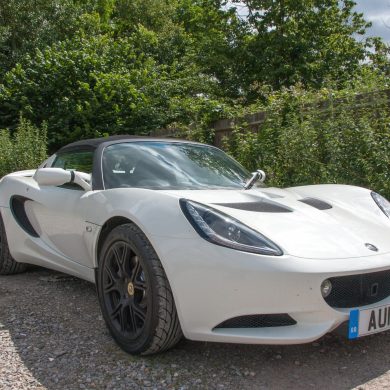
Lotus Elise SC
Years: 2011
Lotus: Type 121
Engine: 1,795 cc supercharged inline 4
Power: 217 bhp @ 6,200 rpm
Torque: 184 lb/ft @ 4,600rpm
0-60 mph: 4.3 seconds
Top Speed: 124 mph
The 2011 Elise range for the US and Canadian markets also got the Lotus Elise SC with its 1.8 liter supercharged 4-cylinder engine with 218 hp and 156 ft.-lbs. The sweetest ride and best performing Elise in the range in our opinion. Lots of updates like the R and base Elise also in terms of design and upgrade options.
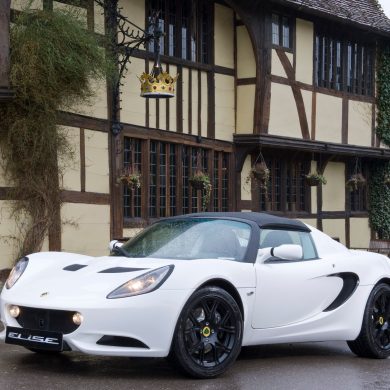
Lotus Elise SC Final Edition
Years: 2011
Lotus: Type 121
Engine: 1,795 cc supercharged inline 4
Power: 217 bhp @ 6,200 rpm
Torque: 184 lb/ft @ 4,600rpm
0-60 mph: 4.3 seconds
Top Speed: 124 mph
With only 15 units made, this final edition is rare. It has a supercharged 217 bhp engine, exclusive matte black paint detailing on the rear transom panel, roll hoop cover, hardtop and door mirror housings and an unprecedented level of standard equipment, this “Final” Elise makes a striking statement. Available in only four colors.
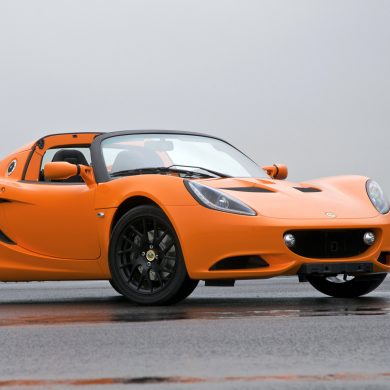
Lotus Elise S
Years: 2012
Lotus: Type 121
Engine: 1,795 cc supercharged inline 4
Power: 217 bhp @ 6,200 rpm
Torque: 184 lb/ft @ 4,600 rpm
0-60 mph: 4.3 seconds
Top Speed: 124 mph
The ‘S’ designation now only applies to supercharged models in the Lotus range, and this Elise comes with a suitably blown 1.8-litre engine. The supercharged engine – a Toyota-sourced four-cylinder, as we’re used to with modern-day Elises – produces 1bhp less but 28 lb/ft more than the unit in the previous-generation Elise SC.
Lotus Elise Club Racer
Years: 2012
Lotus: Type 121
Engine: 1,795 cc inline 4
Power: 134 bhp @ 6,800 rpm
Torque: 118 ft/lbs @ 4,400 rpm
0-60 mph: 6.0 seconds
Top Speed: 127 mph
The engineers behind the Elise Club Racer took a stripped-to-the-bare-bone approach. For the first time ever an Elise variant comes complete with a Sport setting for the DPM (Dynamic Performance Management) allowing even the less experienced sports car drivers to feel at the top of their game.
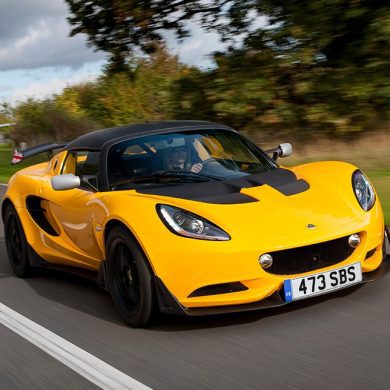
Lotus Elise Cup 220
Years: 2015-Present
Lotus: Type 111
Engine: 1,795 cc supercharged inline 4
Power: 217 bhp @ 6,200 rpm
Torque: 126.9 ft/lbs @ 4,200 rpm
0-60 mph: 4.3 seconds
Top Speed: 140 mph
At the 2015 Geneva Motor Show, Lotus revealed a high performance version of the Elise called the Cup 220. The Cup 220 is a more track focused and hardcore version of the standard Elise. A redesigned, lighter, front clam panel with wider apertures for improved cooling, saves 8.7kg and there are lots of other weight saving initiatives.
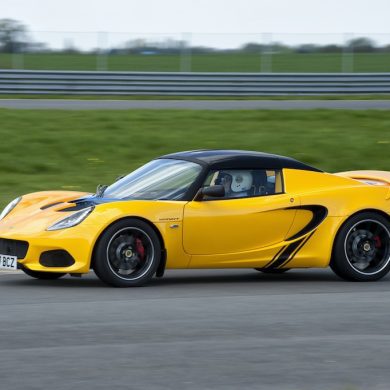
Lotus Elise Sprint
Years: 2017-2018
Lotus: Type 111
Engine: 1,795 cc inline 4
Power: 134 bhp @ 6,800 rpm
Torque: 118 ft/lbs @ 4,400 rpm
0-60 mph: 5.9 s
Top Speed: 140 mph
New iteration of handbuilt Lotus sports car launched with Sprint edition. Sprint adds carbon fiber to cut 41 kg and hit 798 kg dry weight. New front and rear design, and significant interior upgrades. Part of the regular lineup. Biggest weight cut to the car since the introduction of the first-generation Elise. This was one quick car and up there in terms of our favorites.
Lotus Elise Sprint 220
Years: 2017-2018
Lotus: Type 111
Engine: 1,795 cc supercharged inline 4
Power: 217 bhp @ 6,200 rpm
Torque: 126.9 ft/lbs @ 4,200 rpm
0-60 mph: 4.1 seconds
Top Speed: 140 mph
The engineers behind the Elise Club Racer took a stripped-to-the-bare-bone approach. For the first time ever an Elise variant comes complete with a Sport setting for the DPM allowing even the less experienced drivers to feel good.
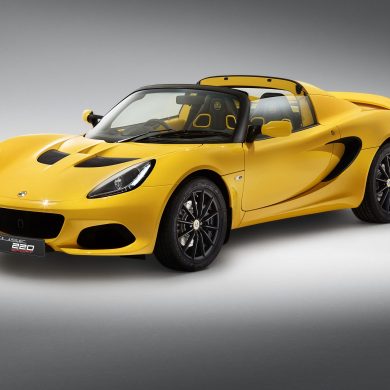
Lotus Elise Sport 220
Years: 2017-Present
Lotus: Type 111
Engine: 1,795 cc supercharged inline 4
Power: 217 bhp @ 6,200 rpm
Torque: 126.9 ft/lbs @ 4,200 rpm
0-60 mph: 4.1 seconds
Top Speed: 140 mph
The Elise Sport 220 builds on the many celebrated Elise virtues, blending agility, power, balance and communication into one compact expression of pure driving joy. It is the current base model available. The entry level Elise is still near perfect.
Limited & Special Edition Series 3 Elise Cars
Lotus Elise S 20th Anniversary
Years: 2015
Lotus: Type 111
Engine: 1,795 cc supercharged inline 4
Power: 217 bhp @ 6,200 rpm
Torque: 126.9 ft/lbs @ 4,200 rpm
0-60 mph: 4.3 seconds
Top Speed: 140 mph
Celebratory 20th Anniversary Special Edition Elise. Special edition, based on the Elise S Club Racer, including classic Elise colour schemes, weight reduced by 10 kg and 20th Anniversary decals externally and on dashboard stereo blanking-plate. This model replaces the Elise S Club Racer.
Lotus Elise Cup 250
Years: 2016-2017
Lotus: Type 111
Engine: 1,795 cc supercharged inline 4
Power: 245 bhp @ 7,200 rpm
Torque: 184 ft/lbs @ 3,500 rpm
0-60 mph: 3.9 seconds
Top Speed: 154 mph
In 2017 Lotus launched their fastest Elise yet, the Lotus Elise Cup 250. Bred for the track but brilliant on the road, the Elise Cup 250 uses highly advanced aero to generate 148 kg of downforce at its maximum speed of 154 mph. 1.8-liter supercharged engine is good for 245 bhp and 0-60 mph in 3.9 secs.
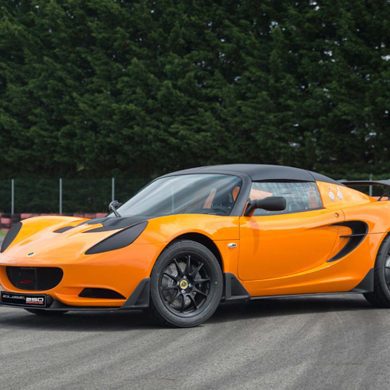
Lotus Elise Race 250
Years: 2016-2017
Lotus: Type 111
Engine: 1,795 cc supercharged inline 4
Power: 245 bhp @ 7,200 rpm
Torque: 184 ft/lbs @ 3,500 rpm
0-60 mph: 3.9 seconds
Top Speed: 154 mph
Specifically developed by Lotus’ famous Motorsport division the car has benefited through the company’s ‘Lightweight Laboratory’. A Lithium Ion battery saves 10 kg, carbon race seats save another 6 kg. Ultra-lightweight forged alloy wheels as well as other lightweight options abound. Weighs less than 900 kg.
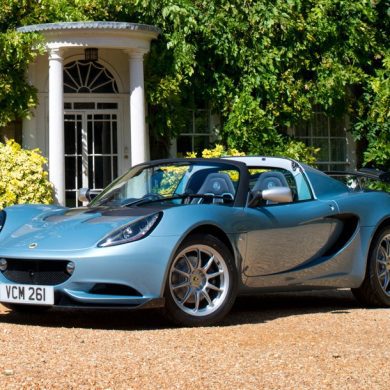
Lotus Elise 250 Special Edition
Years: 2016-2017
Lotus: Type 111
Engine: 1,795 cc supercharged inline 4
Power: 245 bhp @ 7,200 rpm
Torque: 184 ft/lbs @ 3,500 rpm
0-60 mph: 3.9 seconds
Top Speed: 154 mph
Based on the Elise Cup 250 but featuring a raft of exclusive components as standard. 50th anniversary edition celebrates founding of Hethel site. Hand finished, with lightweight carbon components as standard. 899 kg kerb weight delivers pure and precise driving experience. A gem of a car.
Lotus Elise Cup 250 (2017)
Years: 2017-2018
Lotus: Type 111
Engine: 1,795 cc supercharged inline 4
Power: 245 bhp @ 7,200 rpm
Torque: 184 ft/lbs @ 3,500 rpm
0-60 mph: 3.9 seconds
Top Speed: 154 mph
A new version of the Elise’s most popular model, the Cup 250. A massive 23 kg lighter than its predecessor, with lightweight options including a Carbon Aero pack, front access panel, roll hoop cover and engine cover to take this to 40 kg, providing even more blistering performance.
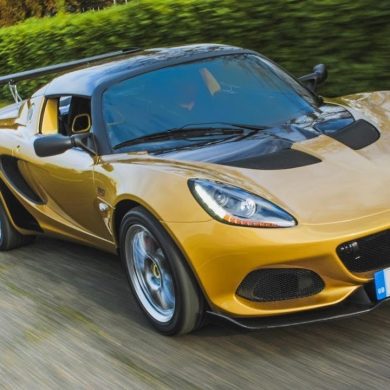
Lotus Elise Cup 260
Years: 2018
Lotus: Type 111
Engine: 1,795 cc supercharged inline 4
Power: 250 bhp @ 7,200 rpm
Torque: 184 ft/lbs @ 3,500 rpm
0-60 mph: 3.9 seconds
Top Speed: 154 mph
Newest Lotus Elise is basically a race car with license plates. The Elise Cup 260 is an evolution of the 250, using carbon fiber parts and polycarbonate backlit glass to shave nearly 150 pounds for a dry weight of just 1900 pounds. Output from the Toyota-sourced supercharged four-cylinder grows slightly to 250 hp.
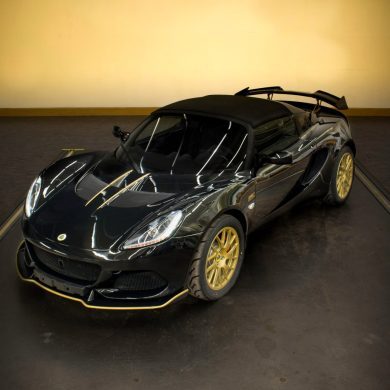
Elise Cup 250 GP Edition
Years: 2018
Lotus: Type 111
Engine: 1,795 cc supercharged inline 4
Power: 245 bhp @ 7,200 rpm
Torque: 184 ft/lbs @ 3,500 rpm
0-60 mph: 3.9 seconds
Top Speed: 154 mph
It wouldn’t be a proper Lotus celebration without the traditional colours of black and gold, which have been applied to the Lotus Elise 250 Cup GP Edition inside and out. Echoing the Team Lotus 72 F1 car, the exterior has gold, accents and wheels that are set against the black base colour, while in the cabin you’ll find plenty of gold-stitch.
Lotus Elise Specs & Performance
A summary of production Elise specifications and performance numbers.
Error
You are trying to load a table of an unknown type. Probably you did not activate the addon which is required to use this table type.
You are trying to load a table of an unknown type. Probably you did not activate the addon which is required to use this table type.


